


Three










Three








4. Introduction
5. Sci-Fi Weekender 16 Guest Appearances
10. 2024 in Review and Looking Forward into 2025
18. Whither Keanau?
- Raven Dane takes a look at two of the new Dracula projects doing the rounds online
20. Vampire Cinema: A Personal View from Dacre Stoker
22. The Many Incarnations of Terrance Dicks
26. Monster Mayhem: The Crazy World of Monster Perfoming Doctor Who
30. Memories of Who a Reminiscence
36. Film Reviews
- Longlegs
- The Lair
- Werewolves
- Kraven The Hunter
- Hellboy: The Crooked Man
- Nosferatu
- Captain America: Brave New World
- Companion
- Wolf Man
- A Better Man
42. From The Vaults: James Herbert
48. Photo Gallery: SFW Awards 2024
50. Photo Gallery: SFW 15th Anniversary 2024
56. Book Reviews
- Once...by James Herbert
- Doctor Who: Timewyrm: Genesys by John Peel
- Doctor Who: Timewyrm: Exodus by Terrance Dicks
- The Soul Thief by Samantha Lee Howe
Welcome to Mission Three of the amazing SFW Magazine! And also to the Sixteenth adventure at Camp SFW in Great Yarmouth
Once again, we have an incredible packed programme for you, with media guests and authors and artists and entertainment ... all guaranteed to keep you on your toes, clapping, laughing and enjoying yourselves all weekend long.
Tickets are already available for the Seventeenth outing in March 2026, so please head to reception to find out costs and how to book at discounted rates before the Sixteenth Cycle finishes!
For the Magazine we have some great features this issue. Paul Mount looks at the best television and film of 2024 and looks forward to what to watch out for in 2025. Raven Dane takes a look at the rumoured new Dracula film starring Keanau Reeves! We have a retrospective with the great writer Terrance Dicks, and we delve into the vaults for a visit with horror author James Herbert.
Dacre Stoker reveals what his favourite Vampire films are, and we have a look at being a Doctor Who monster from the man who has been most of them, Mickey Lewis. Rhys Hughes brings some Doctor Who Memories, and we have a round up of recent film and book reviews for your enjoyement ...
Add to this some amazing photography from Simon Dunkerley and Karen Woodham, and we have another packed edition of the Magazine.
Don’t forget that the Magazine is also available online at www.sfwmagazine.com - with all the latest film and TV news and reviews and features ... check it out! There’s loads of content there. If you’re interested in contributing, then please drop an email to Charlotte at charl@darkwatch.net.
Meantime, all the organisers wish you a happy and safe SFW, and we hope you make some memories to last a lifetime!
David J Howe
Literary Editor




CAROLYN SEYMOUR
English actress, best known for portraying the role of Abby Grant in the BBC series Survivors (1975) and Queen Myrrah in the Gears of War franchise. She was born in Buckinghamshire to an Estonian father of Russian descent and an Irish mother. One of her early television roles was as Jenny in the BBC drama series Take Three Girls, and an early film ppearance was as Zita in the film Steptoe and Son (1972) alongside Harry H. Corbett and Wilfrid Brambell . Her best- known movie role remains Grace Gurney in The Ruling Class (1972), opposite Peter O’Toole. She left Survivors at the end of its first series and appeared in the Space: 1999 episode The Seance Spectre and with Joan Collins in The Bitch (1979). She then moved to the United States and made numerous appearances on television shows, including Hart to Hart; Modesty Blaise; Family Ties; Cagney & Lacey; Remington Steele; Magnum, P.I.; The Twilight Zone; Murder, She Wrote; Matlock; Quantum Leap; Star Trek: The Next Generation; Civil Wars; L.A. Law; Red Shoe Diaries; Star Trek: Voyager; and ER. She has contributed voice work for several Star Wars video games, portraying characters such as Shmi Skywalker and Mon Mothma. She provides the voice for the Locust Queen Myrrah in Gears of War, Dr. Karin Chakwas in the Mass Effect series and the Elder God of Water in Mortal Kombat Annihilation. She has played in audio plays by LA Theatre Works and Hollywood Theatre of the Ear as well as narrated audiobooks.

DAPHNE ASHBROOK
we have the amazing Daphne Ashbrook, making a
welcome return to our shores and to SFW, Daphne is perhaps best known for her appearance as Grace Holloway in the 1996 Doctor Who TV Movie … but she has also appeared in Star Trek Deep Space Nine, Murder She Wrote, The A Team, Fame, Falcon Crest, Hooperman, Sleepwalkers, The OC, Ghost Whisperer and NCIS! Not to mention many audio stories released by Big Finish.
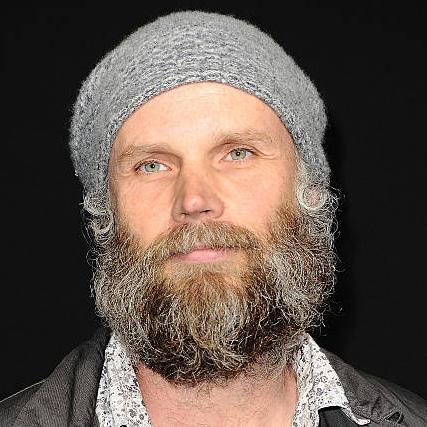
MARCUS NISPEL
Joining us from behind the camera, is director Marcus Nispelm. Marcus directed the remakes/ reboots of The Texas Chainsaw Massacre (2003), the Dean R Koontz/John Shiban-penned Frankenstein (2004), Pathfinder (2007), Friday the 13th (2009), and Conan the Barbarian (2011).

NOAH HATHAWAY
With The NeverEnding Story celebrating its 45th anniversary in 2024, we’re delighted to welcome Noah Hathaway to SFW! Noah played Atreyu in the 1984 film and also appeared as Boxey, the son of Serina and adoptive son of Apollo, in the original television series Battlestar Galactica. His work on The NeverEnding Story made him a teen idol in Europe, and he also appeared in the film Troll and as Jud in the Mork & Mindy episode ‘Little Orphan Morkie’. In recent years he has returned to film, appearing in Sushi Girl and Blue Dream.

PAUL MCGANN
Paul is an English actor who came to prominence for portraying Percy Toplis in the television serial The Monocled Mutineer. He then went on to star as the anonymous main character Marwood in the dark comedy Withnail and I, which was a critical success and developed a large cult following His other film appearances include The Monk, Dealers, Tree of Hands, the epic war film Empire of the Sun, The Three Musketeers and Alien 3. He later became more widely known for portraying the eighth incarnation of the Doctor in the 1996 Doctor Who television film. He has reprised the role of the Eighth Doctor in an extensive series of audio plays by Big Finish Productions. As part of Doctor Who’s 50th Anniversary celebrations, Paul finally reprised his on-camera role as the Eighth Doctor in the mini-episode ‘The Night of the Doctor’. Perhaps his most iconic role since Doctor Who came in 2002, was when he appeared as David Talbot, a member of the secret organisation the Talamasca, in the film adaptation of the third story from Anne Rice’s The Vampire Chronicles, Queen of the Damned. In 2017, Paul joined the cast of the long-running BBC series Holby City, playing neurosurgeon John Gaskell.

BILLY CLEMENTS
Daring stunt artist seamlessly blending adrenaline-fuelled feats with a passion for acting. Bringing heart-stopping action and compelling characters to life is my ultimate thrill.With noable appearances in Deadpool 3, Meg 2, Dune Part 2, Black Widow, The Gentleman & more.


CHARLOTTE BOND
Charlotte is an author, ghostwriter, freelance editor, proofreader, reviewer and podcaster. She grew up in North Yorkshire, moved briefly to Durham for university, then settled in West Yorkshire. If she ever writes a best-seller, she’d like to move back to North Yorkshire, or possibly Hawaii.

BRYONY PEARCE
Stalwart of SFW Bryony Pearce returns! Bryony is a multi-award-winning novelist (including the SFW best sci-fi author award) writing for readers of ages 9-12, 13-19 and adults. For young adults she has penned a mixture of dark thrillers, paranormal adventures, science fiction and horror. Her most recent young adult novels are Cruel Castle (the sequel to the award-winning, Savage Island) and Raising Hell, an urban fantasy with a Buffy vibe. For the adult market she writes thrillers focused on missing children. Bryony works as a consultant and mentor for Cornerstones Literary Consultancy and teaches the Writing for Children course at City University. Among other events, she has performed at the Edinburgh Literary Festival, YALC (twice) and MCM Comicon (twice). She also appears regularly at the Sci Fi Weekender, her favourite place to hang out. She currently lives in Gloucestershire and, when she isn’t working or providing a taxi service for teens, can usually be found reading, writing, drinking wine or playing the cello (badly)

G N SMITH
Graham Smith is a time served joiner who has built bridges, houses, dug drains and slated roofs to make ends meet. Since Christmas 2000, he has been manager of a busy hotel and wedding venue near Gretna Green, Scotland. He is an internationally best-selling Kindle author and has six books featuring DI Harry Evans and the Cumbrian Major Crimes Team, and four novels, featuring Utah doorman, Jake Boulder. His ‘Lakes’ series which has three novels featuring DC Beth Young has received much critical acclaim. Graham is the founder of Crime and Publishment, a weekend of crime-writing classes which includes the chance for attendees to pitch their novels to agents and publishers. Since the first weekend in 2013, sixteen attendees have gone on to sign

NOELLE HOLTEN
Award-winning blogger at www.crimebookjunkie. co.uk. She is the PR and Social Media Manager for Bookouture, a leading digital publisher in the UK, and worked as a Senior Probation Officer for eighteen years, covering a variety of risk cases as well as working in a multi-agency setting. She has three Hons BA’s – Philosophy, Sociology (Crime and Deviance) and Community Justice – and a Masters in Criminology. Noelle’s hobbies include reading, attending as many book festivals as she can afford and sharing the booklove via her blog. Dead Inside, her debut novel with One More Chapter/Harper Collins UK is an international Kindle bestseller and the start of a series featuring DC Maggie Jamieson. 6 Ripley Avenue, a stand-alone thriller is her first standalone and is out now. A new stand alone novel is coming in Spring 2024.

RAVEN DANE
Raven Dane is a UK based author of dark fantasy, alternative history, steampunk novels and horror short stories. Her first books were the dark fantasy Legacy of the Dark Kind trilogy. These were followed by a High Fantasy spoof, The Unwise Woman of Fuggis Mire. Her steampunk novels are the award-winning Cyrus Darian and the Technomicron and Cyrus Darian and the Ghastly Horde. She has also had many short stories published. In 2013, her collection of Victorian ghost stories, Absinthe and Arsenic was published and in 2015, the alternative history/supernatural novel, Death’s Dark Wings. Novellas include The Bane of Bailgate, a horror tale, and The House of Wrax, set in a chaotic, dystopian future. A lifelong Doctor Who fan, Raven was delighted to be part of the script team on a spin off film, The White Witch of Devil’s End released by Reeltime Pictures in 2017. She also contributed to the novelisation of the film. Her next work is a folk horror tale, Dwrg Stones, which will be launched at SFW XV.
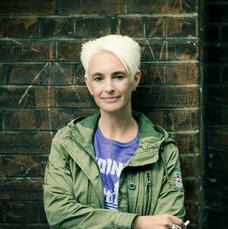
CJ TUDOR
C J Tudor’s love of writing, especially the dark and macabre, started young. While her peers were reading Judy Blume, she was devouring Stephen King and James Herbert. Over the years she has had a variety of jobs, including trainee reporter, radio scriptwriter, dog walker, voiceover artist, television presenter, copywriter and now, author. She is now the Sunday Times bestselling author of The Chalk Man, The Taking of Annie Thorne, The Other People, The Burning Girls and The Drift. All of her books are in development or optioned for TV, and The Burning Girls debuted on Paramount Plus in 2023. She is also the author of a short story collection, A Sliver of Darkness.

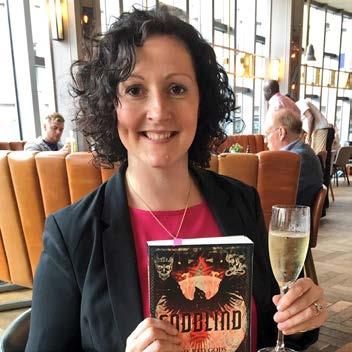
ANNA STEPHENS
Returning to SFW is Anna Stephens, the author of the epic fantasy Godblind and Songs of the Drowned trilogies through HarperVoyager. She also writes for Black Library in their Age of Sigmar and Warhammer Horror imprints, as well as for Marvel Comics through their tie-in publisher, Aconyte Books.
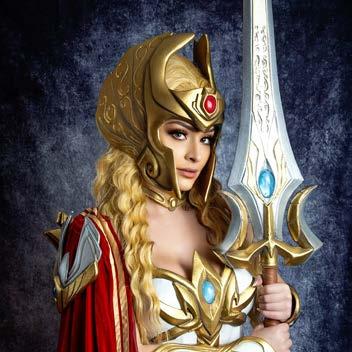
TABITHA LYONS
Ever since she can remember, Tabitha has been playing Dungeons and Dragons, as well as running around and having fun participating in live-action role-playing. In 2012, she discovered the world of cosplay and hasn’t looked back! She now travels the world guesting at conventions as well as being able to teach a variety of skills at panels and judging craftsmanship cosplay competitions. As a full time crafter and costumer, she brings characters and props to life! This can be from all forms of entertainment media – she has been commissioned from many of the biggest names in the Industry such as Warner Brothers, Marvel, Paramount, Amazon, Fortnite and Blizzard to name just a few, to bring their creations to life.
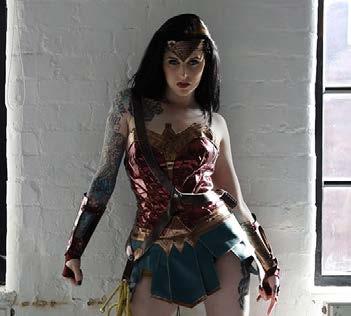
With 10 years of experience in the cosplay world, Samii Jinx joins us for a variety of panels, competitions and photo opportunities! Samii has worked and run a variety of geeky events over the years as well as being a self proclaimed nerd herself and now brings that wealth of knowledge to SciFi Weekender to focus on the cosplay and community aspects of our festival!
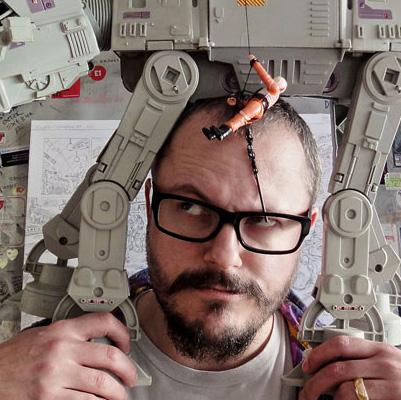
Boo Cook mostly works as an artist for British comic 2000AD on characters such as Judge Dredd, Anderson Psi, Death Cap, Void Runners, Blunt, Harry Kipling, ABC Warriors and Asylum. Boo has also worked on various Image comics including Elephantmen and Prophet, Doctor Who for Titan comics and has provided covers for Marvel Comics Wolverine and X Factor. He’s provided art for several album covers including Henge’s ‘Journey To Voltus B’ and various other artists. He is also a painter and a musician in solo project Owlmask and plays drums with bands Forktail and Crab, all of which can be found on Bandcamp.
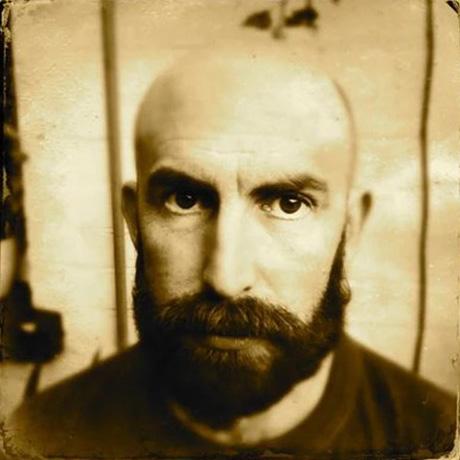
SIMON DAVIS
British portraits artist and comics artist. In comics Simon is known for his fully painted art work for 2000 AD on “Sinister Dexter”, “Sláine” and “Stone Island”. Later in his career he became a member of the Royal Birmingham Society of Artists and the Royal Society of Portrait Painters, and he has produced prize-winning fine art for the National Portrait Gallery.
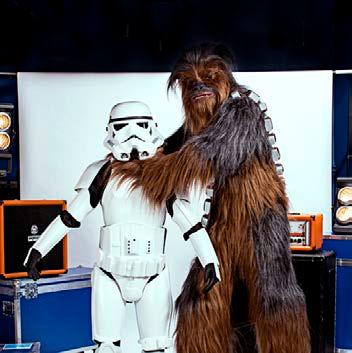
Paying tribute to the biggest Sci-Fi Phenomenon of the century, the greatest space story ever told!

JOHN ROBERTSON’S THE DARK ROOM
Back for more shenanigans in a lightless arena is John Robertson’s The Dark Room…You awake to find yourself in a dark room … what do you do? Only John has the answers in this interactive game which is sweeping the world. Will the randomly chosen contestants win out … or will they DIE, DIE, DIE!!!

POP UP PUPPET CINEMA
SFW wouldn’t be the same without ‘em. Your fav Horror movies but in puppet form – this time featuring Raiders of the Lost Ark and Flash Gordon! Not only that – but the puppets present their amazing interactive quiz!


Armed with a steampunk aesthetic and bringing in a thunderous twisted sound of Guitars, pianos, violins, trumpets and anything we can throw in the mix, ‘Victor and the Bully’ create a carnival blend of music inspired by pop, punk, swing, mariachi, classical and metal to blow the cobwebs away and get the feet tapping! Victor and the Bully have entertained from small stages, large public festivals, to sold out 2500 cap venues playing to all types of audiences from UK, Lithuania, Czech Republic and USA!

JOLLYBOAT
Jollyboat are the UK’s best comedy-pirate geekrock bard duo. Brothers Tommy and Ed write catchy songs and lyrics packed with fast-paced one-liners. They always have fun, and it’s highly infectious. Jollyboat have performed at Glastonbury festival, Edinburgh Fringe, won the UK Musical Comedy Awards, and toured Europe & Australia. With comedy, music, and live video & graphics, this is a show unlike anything you’ve seen before!

To keep the party rocking, we welcome back Level-Up Leroy with his own special blend of music and video to keep the night jumping!

EMBER WOLF
British cosplayer, model, artist and content creator who became a celebrity on TikTok. Her original costume-themed footage has helped them acquire over 3.1 million fans and more than 68 million likes on the app.

GEORGE COPPEN
After George Coppen’s triumphant comedy set at the last two SFW events, we’re delighted that he is back! George is an actor and comedian who appeared in the Netflix film The School For Good And Evil playing Cupid, and also in the new Willow television series. He’s a regular in Pantomime, and will be performing his stand-up live on stage.

ALEX LEAM
Alex Leam used to be a DJ, but quit as he had enough of doing weddings. Then he became a comedian. Now he’s combining the two. Expect to have your favourite songs ruined.
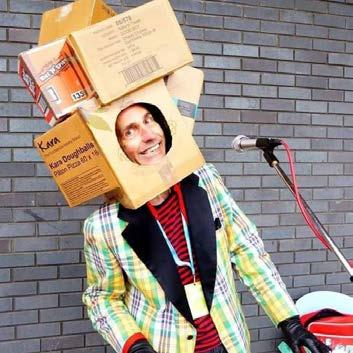
GRAHAM GRAHAM BECK
He’s not been the same since he found SFW – the Action Man With a Giraffe’s Head has been busy working on some new material especially for SFW, so get ready to boogie to some inexplicably catchy tunes about everyday household objects … and UFOs. Graham has recently been featured on Radio 6 Music as he continues his rise through a parallel Universe of Pop

LIFE SIZED DUNGEONS AND DRAGONS
We are delighted to announce the hottest property in immersive gaming experiences - Life Sized D+D is coming to SciFi Weekender! Atmospheric scenery, exciting stories and encounters, engaging soundscape, player costumes, photo opportunities, real dungeon masters, monsters, traps and puzzles – and giant dice!! The Story Weavers are skilled artisans in the craft of narrative, shaping your tale and guiding you on an adventure lasting 30 minutes. Possessing ample experience in the realm of tabletop gaming, their passion for the craft extends beyond expertise— it is a heartfelt commitment to sharing the magic of tabletop experiences with diverse audiences at events and beyond!


TAV MACDOUGALL
A British actor known for playing a Death Eater in Harry Potter and the Order of the Phoenix. Other roles include appearances in Trust Me, Coronation Street, Emmerdale and Doctors.

JOHN SIMPKIN
Best known for playing the alien Klaatu in Return of the Jedi. Other appearances have been in Flash Gordon, The Monster Club, An American Werewolf in London and The Meaning of Life.

CC ADAMS
London native CC Adams credits his oldest brother with showing him the world of dark fiction and horror through books, TV and film at an early age. As a result, this left him scared to watch any more horror ...and ironically left him with a strong appreciation for a good horror story. On beating his first National Novel Writing Month challenge in 2009, CC decided to run with more of his ideas, now having written books such as But Worse Will Come, Forfeit Tissue, Misery And Other Lines, and Downwind, Alice.

K NIXON
An ex-archaeologist enjoying life in the slow-lane, Lauren K Nixon is an indie author fascinated by everyday magic. She is the author of numerous short stories, Mayflies, The Fox and the Fool, The Last Human Getaway, and The House of Vines, the first book in the Chambers Magic series. She also curates The Superstars, a vibrant community of writers, poets and artists.

A British comic and magazine editor, and author of a number of books on comics. As head of Marvel Comics’ operations in England in the late 1970s, Skinn reformatted existing titles, launched new ones, and acquired the BBC license for Doctor Who Weekly. After leaving Marvel UK, Skinn founded and edited Warrior, which featured key works by Alan Moore. Called by some the “British Stan Lee,” Skinn is one of British comics’ most influential figures.
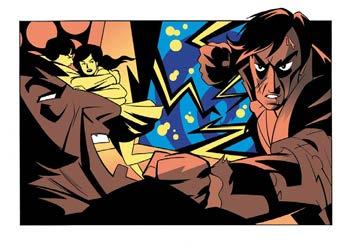
Adrian’s early work included the series “The Cybermen” for Doctor Who Magazine and “Judge Karyn” for the Judge Dredd Megazine. He then spent time working on various Panini Comics titles including The Rugrats and Action Man. Salmon later became better known as a comic book colourist, working primarily on the Doctor Who strip and various Panini superhero titles. He was commissioned to work on the ongoing ‘Time Team’ series of articles for Doctor Who Magazine, providing illustrations of the televised Doctor Who stories. He also provides the cover artwork for the Bernice Summerfield range of audio CDs produced by Big Finish Productions. Adrian has published a graphic novel, The Faceless: A Terry Sharp Story.
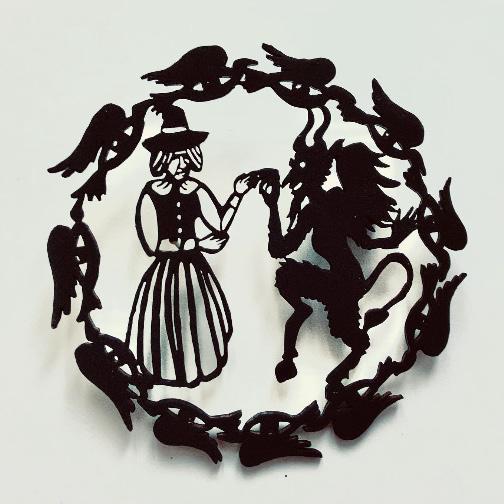
TOM EGLINGTON
Tom Eglington is a multi-discipline writer and artist. He is known for his work on 2000AD, having written numerous scripts for Judge Dredd, as well as creating folk horror hit, Thistlebone, and eco sci-fi series, Blunt. He is the author of two children’s novels, The Spellbound Hotel and The Stolen City.

PYE PARR
Pye is a designer, illustrator, and comic artist. Best known for his graphic design on 2000 AD, he has a highly diverse body of work, from comics to gig posters, book covers, concept art, large scale oil paintings, and branding.
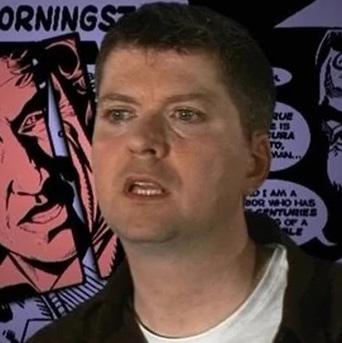
MARTIN GERAGHTY
His first commission was for the Marvel UK comic Overkill but the comic folded before his story was published. He began drawing for Doctor Who Magazine in 1993 and has continued to draw regularly for it ever since.
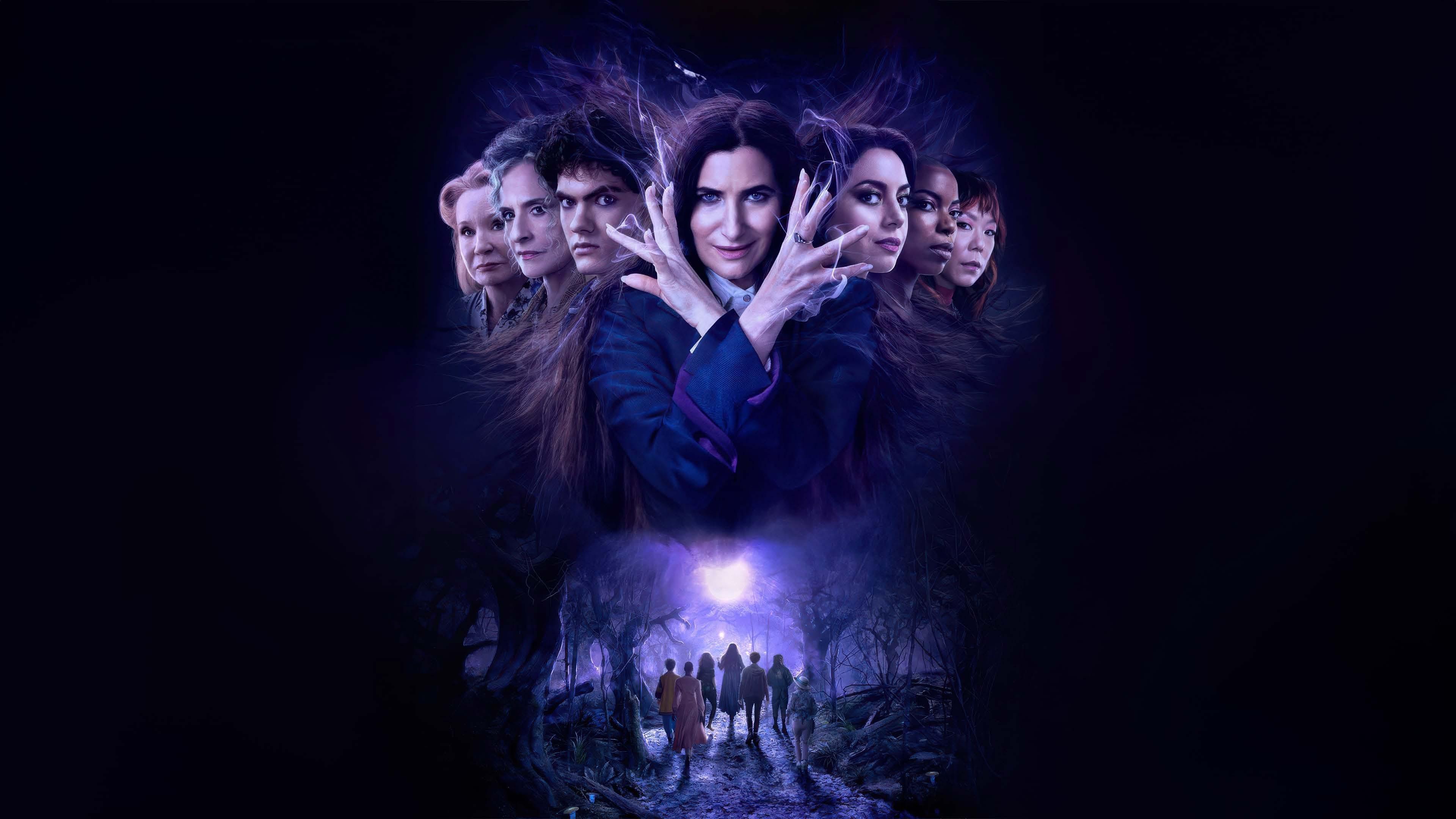
By Paul Mount
We’re spoilt for choice these days with a wealth of genre entertainment available on TV, streaming and at the cinema. Here we look back at some of the movers and shakers from 2024 before finding out what treats are still in store in 2025…

3 BODY PROBLEM (Netflix)
Netflix’s eight-episode adaptation of the first of Liu Cixin’s Remembrance of Earth’s Past novel trilogy was a brain-boggling piece of globe-trotting hard sci-fi that, in the simplest possible terms, dealt with humanity’s first contact with extra-terrestrial life and an existential threat to the future of human life on Earth. Challenging and powerful, 3 Body Problem is a work of soaring imagination and Netflix has commissioned two further series.

THE PENGUIN (HBO)
This gritty crime series from HBO, a spin-off from Matt Reeves’ 2002 Batman feature film, showed just what can be done with comic book material in the right hands. Colin Farrel, unrecognisable in an extraordinary prosthetic full-body suit, delivers a powerful performance as Oswald Cob, struggling to take control of Gotham’s criminal underworld but he’s matched and possibly surpassed by Cristin Milioti as Sofia Gigante, Oswald’s psychopathic rival
driven insane by a lengthy spell in Arkham Asylum orchestrated by her own father. Envisaged as a one-off ‘event’ series, plans are already underway for a second run of The Penguin.
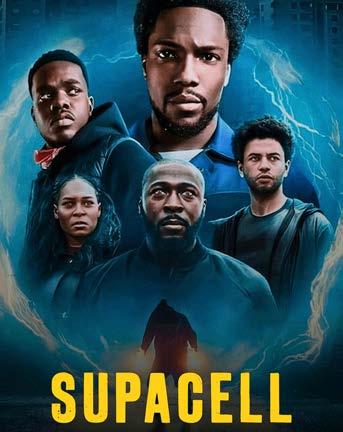
SUPACELL (Netflix)
The Brits fight back! Created by Andrew “Rapman” Onwubolu, Supacell delivered a very different spin on superhero storytelling with this six-episode series about a group of five ordinary, unassuming black people living in modern-day South London, unified by a history of sickle cell disease, who develop extraordinary superpowers. Season two is due to film this year with Rapman planning a third to…er… wrap up the story.
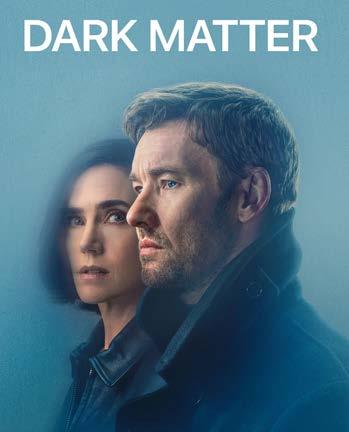
DARK MATTER (Apple TV+)
Created by Blake Crouch from his novel of the same name, Dark Matter starred Joel Edgerton as a Chicago-based physicist who finds himself transported into an alternate version of his own life and fighting to return to his own world despite the best efforts of the alternative version of himself who is slowly
FALLOUT (Prime Video)


Based on the role-playing videogame franchise, Fallout is set in an alternative Earth timeline in the aftermath of an apocalyptic nuclear exchange between the USA and China in 2077. Lucy (Ella Purnell) emerges from an underground vault to explore the dangerous, devastated Los Angeles landscape as she searches for her kidnapped father. Fallout was quickly renewed for a second season.
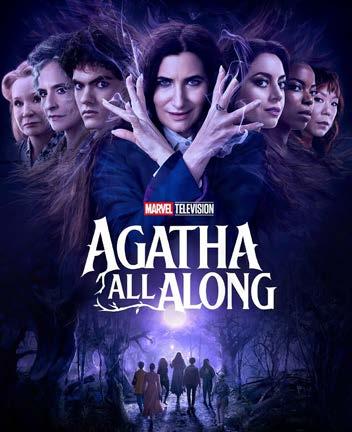
AGATHA ALL ALONG (Disney +)
This long-awaited WandaVision spin-off saw the return of Katherine Hahn’s witchy Agatha Harkness in a nine-episode romp that delivered magic, music and madness as Agatha and her new coven travel the Witches’ Road to recover Agnes’s lost powers. Beguiling but bonkers, Agatha All Along (and the smash hit Deadpool and Wolverine) suggested that the MCU hasn’t quite run out of steam just yet.

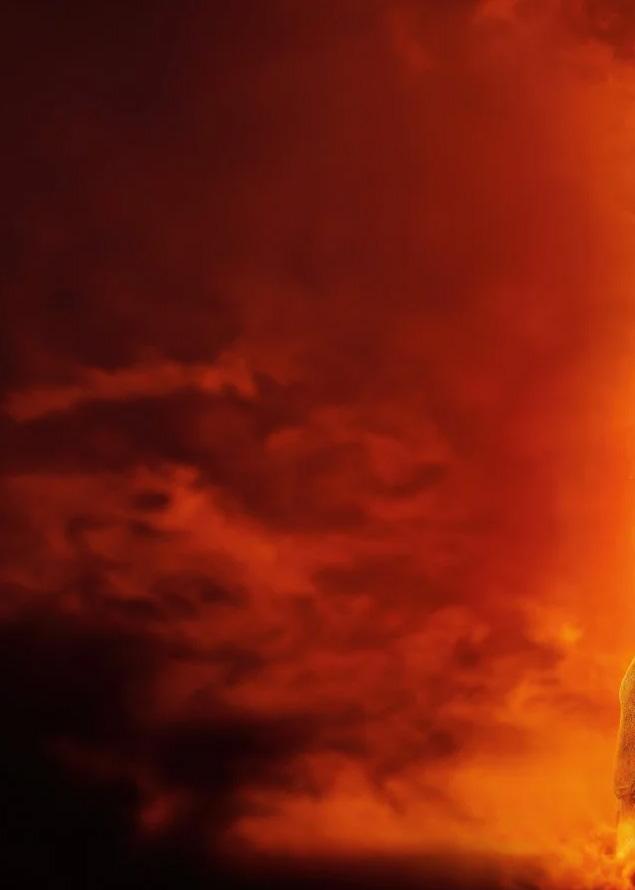
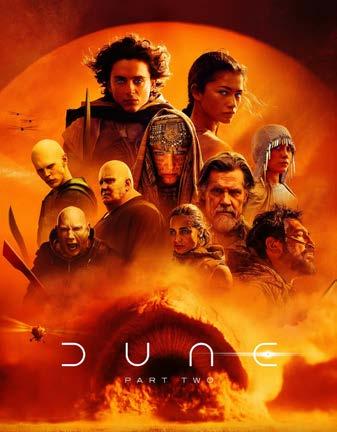
The second half of Denis Villeneuve’s adaptation of Frank Herbert’s first Dune novel saw Timothee Chalamet’s Paul Atreides unite with the nomadic Fremen on the desert planet Arrakis in preparation for a war against House Harkonnen. Huge in scope and epic in story, Dune: Part Two was a triumph and Villeneuve is currently working on an adaptation of Dune: Messiah to complete his trilogy.
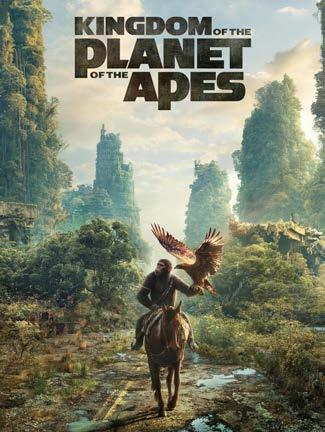
Wes Ball kicked off a planned new trilogy of Apes films set generations after the death of Caesar and introduced Noa, a young chimpanzee who finds himself and his clan fighting against the aggressive and war-hungry Proximus Caesar with the threat of a new conflict with the survivors of humanity looming over the horizon in the sequel, due in 2027.
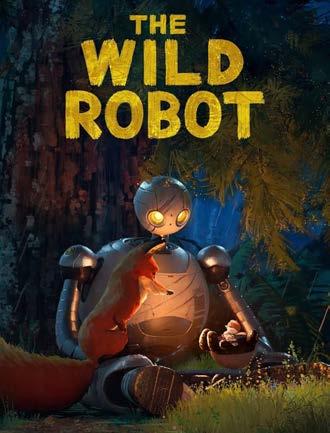
Boasting the voice talents of Lupita Nyong’o, Pedro Pascal, Bill Nighy, Mark Hamill and Matt Berry this charming Dreamworks family animation told the uplifting story of a service robot stranded on an uninhabited island forced not only to adapt to her strange new surroundings but also to build relationships with the unfamiliar local fauna. The Wild Robot delivered heartwarming thrills and spills with a timely environmental subtext.

The beleaguered Alien franchise rose from the ashes with Fede Alvarez’s ‘greatest hits’ sci-fi thriller that reminded audiences of everything that made the series work in the first two instalments. The inevitable sequel is on the way as well as a new Alien TV series this summer.
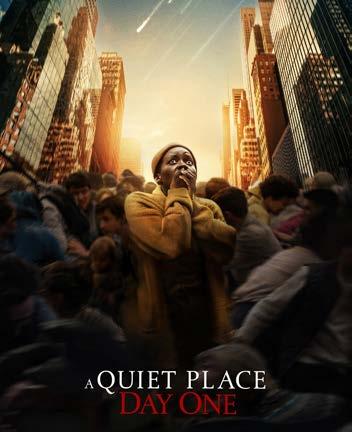
Michael Sarnoski’s prequel to John Krasinski’s post-alien invasion series (the third and final film is due next summer) takes us back to the day the aliens arrived in New York and whilst it was both spectacular and thrilling it was ultimately an intimate and sensitive story of two strangers (and a cat) coming together and searching for redemption in a world suddenly turned upside down. Let’s look forward to the year ahead and highlight some upcoming TV shows and films you might want to keep an eye out for…



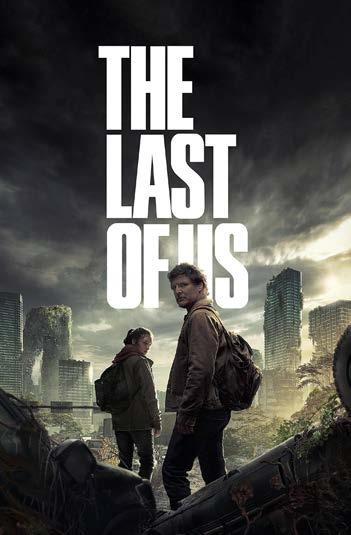
THE LAST OF US (NOW TV in the UK)
The first season of The Last Of Us, airing in 2023, was a well-received small screen version of the cult computer game created by Naughty Dog. Season 2 – just seven episodes this year – arrives in April and is expected to adapt 2020’s Part 2 game and sees Kaitlyn Dever as Abby joining Pedro Pascal’s Joel and Bella Ramsay’s Ellie as they battle to stay alive in a world devastated by a mass fungal infection.\

BLACK MIRROR (Summer, Netflix)
Six new episodes of Charlie Brooker’s thought-provoking and cautionary sci-fi series are due in this year’s seventh season and whilst little is known about the storylines we know that The Penguin’s Cristin Milioti will return in a sequel to season 4’s Star Trek-inspired USS Callister. A “stacked cast” for the season includes appearances from Rashida Jones, Awkwafina, Peter Capaldi, Harriet Walter, Emma Corrin, Chris O’Dowd and Paul Giamatti.
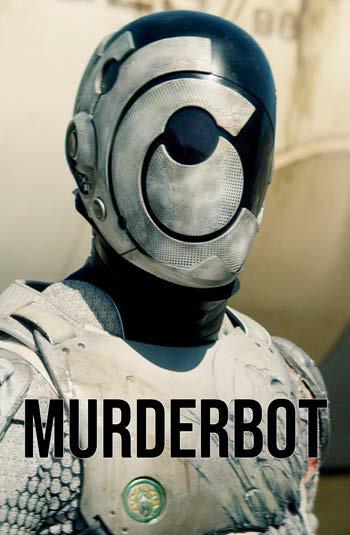
MURDERBOT (Apple TV+, June)
Based on the Murderbot Diaries book series by Martha Wells, the new Apple+ ten-episode production stars Alexander Skarsgard, David Dastmalchian and Noma Dumezweni in which a sentient security android hides its ability for independent thinking whilst undertaking dangerous assignments for a futuristic megacorporation.


STAR CITY (Apple TV+, tba)
Rhys Ifans and Anna Maxwell Martin are the latest additions to the cast of this spin-off from For All Mankind, sci-fi TV’s greatest secret, in another alt-history series that chronicles Soviet Union’s own ambitious plans to win the Space Race against the USA.
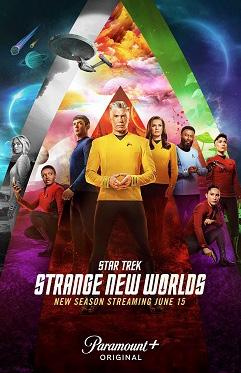
STAR TREK: STRANGE NEW WORLDS (Paramount +, tba)
This no-nonsense Star Trek prequel series marries the episodic structure of the original Star Trek series with nostalgic throwbacks and gentle underlying story arcs. Rhys Darby joins the regular cast including Anson Mount as Kirk, Ethan Peck as Spock and Rebecca Romijn as Number One/Una Chin-Riley.
Season four is already in production.

STRANGER THINGS (Netflix, November)
The final run of the Duffer Brothers’ Netflix phenomenon is due to arrive towards the end of the year (although it could yet slip back into 2026). Eight “blockbuster movie-length” episodes are promised, wrapping up the 1980s-set sci-fi mystery set in the fictional town of Hawkins, Indiana. Returning cast will include Millie Bobbie Brown, Winona Ryder, David Harbour, Finn Wolfhard and Gaten Matarazzo with Terminator’s Linda Hamilton joining in an as yet undisclosed role.

STAR WARS: ANDOR (Disney +, April)
The prequel series to Rogue One returns for a
second (and final) season following thief/rebel spy Cassian Andor (Diego Luna) in a five-year period prior to the events of Rogue One/Star Wars: A New Hope as he turns against the Galactic Empire and helps form the Rebel Alliance.

WEDNESDAY (Netfix, tba)
Netflix’s surprise 2022 hit chronicling the schooldays misadventures of Wednesday Addams (Jenna Ortega) away from the family ties of the Addams Family, returns for its second season. Ortega will be reunited with Catherina Zeta-Jones and Luis Guzman as her parents Morticia and Gomez and new faces in the cast include Billie Piper, Joanna Lumley, Steve Buscemi, Christopher Lloyd and Thandiwe Newton with a cameo appearance from Lady GaGa. Tim Burton returns to direct the first four episodes.
Ones to watch: The Ministry of Time (BBC), Doctor Who Season 2/15 (BBC), Blade Runner 2099 (Prime Video), Ironheart (Disney +), The Wheel of Time Season 3 (Prime Video), The Witcher Season 4 (Netflix), Revival (SyFy, Alien: Earth (Hulu, June)

(December)
Derided by critics but adored by audiences, James Cameron’s first two Avatar movies both grossed over $2 million at the Box Office worldwide. Fire and Ash introduces a new volcano-dwelling clan on the planet Pandora and Sam Worthington, Zoe Saldana and Sigourney Weaver return with David Thewlis and Oona Chaplin debuting.

MISSION IMPOSSIBLE: THE FINAL RECKONING (May)
Tom Cruise’s often unbearably-exciting action franchise returns for possibly the final time as Ethan
Hunt continues his battle against the rogue AI The Entity from 2023’s Dead Reckoning. The stakes are high and all bets are off as Christopher McQuarrie returns to direct Cruise alongside Hayley Attwell, Simon Pegg, Vanessa Kirby, Ving Rhames.
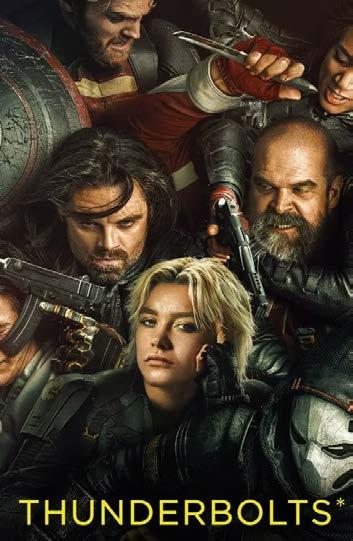
The MCU follows February’s Captain America: Brave New World with the introduction of a ramshackle bunch of anti-heroes-turned-superheroes including Florence Pugh’s Yelena Belova, Sebastian Stan as the Winter Soldier/Bucky Barnes and David Harbour as the Red Guardian, marshalled together by Julia Luis-Dreyfus’s Valentina Allegra de Fontaine. Hopefully we’ll finally find out the significance of the * in the title.

(July)
Three years after the events of the disappointing Jurassic World: Dominion and the dinosaurs are back! Directed by Gareth Edwards this latest movie features an all-new cast – Scarlett Johannson, Mahershala Ali, Jonathan Bailey – travelling to one of the original park’s research laboratories and we’re promised encounters with old favourites the raptors and new mutated dinosaurs that have been roaming freely for decades.

The Cornetto trilogy’s Edgar Wright returns with a remake of the 1987 Arnold Schwarzenegger sci-fi favourite in which murderous hunters chase contestants across the world in a futuristic game show. Twisters star Glenn Powell leads a cast that includes Josh Brolin, Michael Cera and William H Macy.



TRON: ARES (October)
In this standalone entry in the occasional Tron series, a highly-sophisticated computer programme called Ares is sent from the digital world into the real world on a dangerous mission. The film is directed by Joachim Ronning and stars Jared Leto as Ares.

SUPERMAN (July)
James Gunn’s rebooted DC Universe kicks off with this new adventure for the Man of Steel, written and directed by Gunn and starring the relatively-unknown David Corenswet as the Last Son of Krypton. Rachel Brosnahan plays Lois Lane with Nicholas Hoult as Lex Luther and Nathan Fillion as the Green Lantern. Hopes are high, fingers are crossed.

FANTASTIC FOUR: FIRST STEPS (July)
Fourth time lucky for Marvel’s first family? Pedro
Pascal, Vanessa Kirby, Joseph Quinn and Ebon Moss-Bachrach suit up to fight Galactus and a reimagined Silver Surfer in this eagerly-anticipated MCU spectacular set in an alternative 1960s directed by Matt Shakman. Hopefully this time it’s “flame on!” rather than another damp squib.
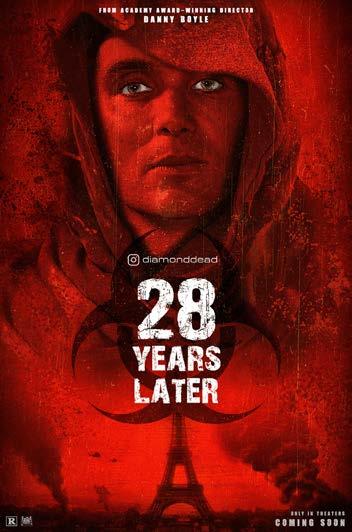
28 YEARS LATER (June)
Alex Garland and Danny Boyle’s post-apocalyptic horror franchise explodes back to life this year with this new film, again directed by Boyle with Garland providing the script, that takes the story forward and focusses on survivors on a remote island community venturing back onto the mainland. Jodie Comer, Aaron Taylor-Johnson and Ralph Fiennes star. Sequel 28 Days Later: The Bone Temple is already filmed and due for release in January 2026 and a third film enters production shortly. Ones to watch: Predator Badlands (November), Guillermo del Toro’s Frankenstein (November), M3GAN 2.0 (June), A Minecraft Movie (April), Mortal Kombat 2 (October), Afterburn (tba),Skyline: Warpath (tba).

Fandom is now a worldwide phenomenon, with even China hosting a big, successful and joyous cosplay festival in Shanghai in 2024. Unfortunately with every popular movement there will be those wanting to exploit in for their own financial ends.
Modern technology has allowed fan-created videos, posted on YouTube. They openly declare that it is inspired by their passion for SF and Horror films and very few creators of the original product have a problem with this, indeed, often quite the opposite. It is an inventive and enthusiastic celebration of their own art in making the film in the first place.
Things take a much darker tone with trailers for upcoming films that do not and never will exist but are not openly labelled as having been created by fans. They are made to deceive and the makers earn money from the clicks to YouTube. They are effectively made simply to exploit fan bases for money.
A recent example of this deliberate deception is the trailer which suggests that Keanu Reeves was starring in a brand new adaption of Dracula in 2025. Blatantly announced as the first official trailer, which follows the pattern that major studios use to promote a new film, this is a highly professional looking production. It blends past footage of Keanu, AI imaging, dramatic music and the official logo of Universal studios. Also someone (or perhaps an AI) provides a voice over imitating Reeves’s voice which didn’t sound right to me. Obviously a great many people clicked on it and encouraged
other fans to do the same. It currently has had 4.8 million viewers, 19 thousand ‘like’ clicks and has earned plenty of money for the people behind the deception. More clued up viewers saw through the sham as the comments attest, but as in so many online things, there are a great many people who will accept this trailer as the truth. They never seem to read the comments below the video or maybe wishful thinking has overridden their common sense.
Has any harm been done, beyond triggering disappointment? Do they think Universal will suddenly decide to make this a reality to please the fans? A new film takes years of preparation, gaining the desired cast and production teams, and even then many film projects never reach completion. That the video makers say it is coming out in 2025 is a dead giveaway.
Or is it just a straight-forward scheme by the creators to make money out of fan enthusiasm? A fan posted: ‘It’s click bait and it makes me mad. I hate getting the “Oh, boy! A new trailer for this film I really like!” And having it turn into a fake. The only reason they don’t put “Fan-made” in the title is to trick people into giving them cheap views.’
I did an extensive search before writing this, and there is no official announcement about Keanu Reeves playing Dracula and no mention of any production. So we must assume that the trailers for it are all fakes.
But there also seems to be a real film, Luc Besson’s version of Dracula, which is supposedly coming out in 2025. Besson
is a director known for his incredible vision in films like The Fifth Element and the spectacular Valerian and the City of a Thousand Planets. These wild, SF adventures have moments of humour cleverly interwoven into the narrative. When he goes dark, Besson goes pitch black without losing his unique signature style. Leon for example, starring the wonderful Jean Reno as a killer for hire who trains a twelve year old girl to also be an assassin. This is as dark as you can get! Films like Anna show espionage and time-jump constructed narratives, and Lucy sees a girl gain superpowers via a nano-bot chemical forced into her bloodstream. The films are imaginative and effective.
Dracula has been portrayed in so many ways over the years. It will be fascinating to see Besson’s approach. Entitled Dracula: A Love Tale, the clips and images from the film suggest a similar, stylish approach to that taken by Francis Ford Coppola in Bram Stoker’s Dracula. Slated to star in the film are Caleb Landry Jones as Dracula and Christoph Waltz as Priest.
However … there are trailers supposedly from this film also on You-Tube which are AI created and which use footage and music from elsewhere. You really cannot believe everything you see these days!
Raven Dane is the critically acclaimed author of the vampiric Legacy of the Dark Kind series: Blood Tears, Blood Lament and Blood Alliance.
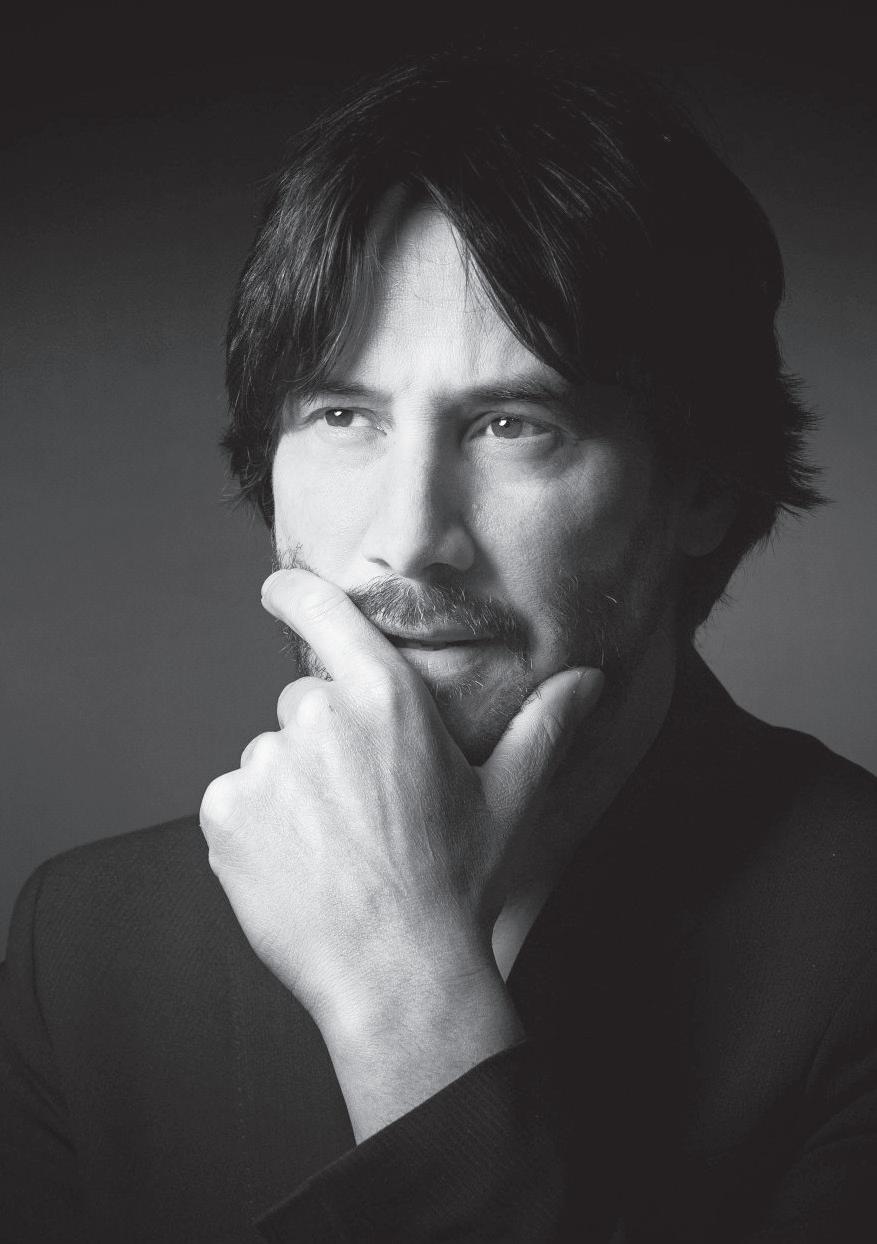
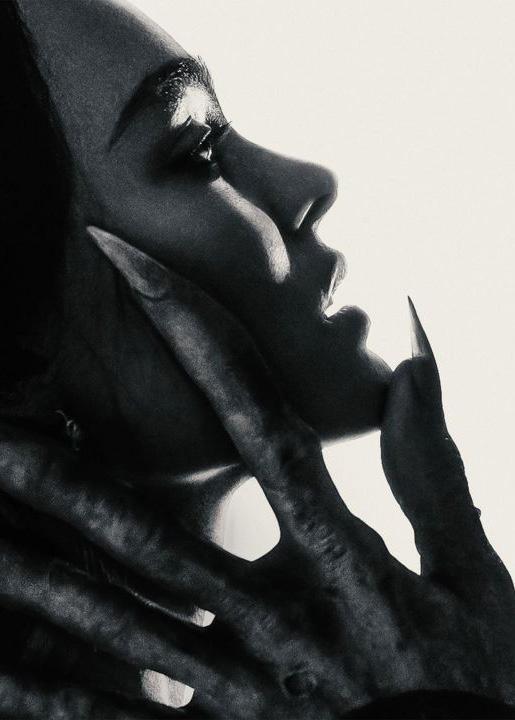

Dacre Stoker brings us his personal favourites in vampire cinema through the ages.
I am frequently asked for my list of favourite Dracula movies. I have to say that over the years I have enjoyed a wide variety of Dracula and vampire-themed films, and even if a film is not entirely faithful to my great grand uncle’s novel, then this does not instantly make me recoil in disgust. I understand how different screenwriters, directors and producers strive to inject their own creativity into each film as an original form of art. After all, if someone was to film Dracula as Bram Stoker wrote it, hardcore fans would have nothing to complain about.
My favourites then, in no particular order: I cut my teeth as a teenager on The Fearless Vampire Killers (1967) by Roman Polanski, a film I watched at boarding school, that combined a bit of humour with vampire lore. The lovely Sharon Tate was also easy on the eyes for the all-male audience! I also enjoyed TV shows like The Munsters and The Addams Family, as well as the more serious daytime drama Dark Shadows. These shows share very little connection to Bram Stoker’s Dracula, but I found them very entertaining.
Universal’s 1931 Dracula. I love the dark spooky vibe, admittedly I was a little taken aback, but give credit, for the inclusion of an opossum and armadillos in the film which is probably all Universal Studios could do to provide strange looking wild animals to depict a faraway location. Bela Lugosi, speaking phonetically in his Hungarian accent, was memorable and set the tone for many vampires to follow.
Because of its faithfulness to the novel, I actually prefer the 1977 BBC miniseries Count Dracula, starring Louis Jourdan as Count Dracula. It is dark, follows the novel closely, but as one can expect, is a little dated when it comes to the special effects and atmosphere available on a seventies BBC budget. I particularly enjoyed the 1958 Horror of Dracula from Hammer films, the first in their long series bringing together the iconic duo of Christopher Lee and Peter Cushing. This was the first Dracula film where blood was visible on Count Dracula’s lips.
I thought the Dan Curtis Dracula in 1974 was brilliant for its linking, via flashbacks, the origin of Vlad Dracula ‘the Impaler’ with the Count Dracula character. Bram Stoker never used the name Vlad or the nickname ‘Impaler’ in his novel: screenwriter Richard Matheson made a bold move and started the
trend to establish this modern day connection.
I thoroughly enjoyed the 1992 Francis Ford Coppola Bram Stoker’s Dracula film, except for the name. Screenwriter J V Hart strayed from the novel to provide the film with an element of romance by sending Count Dracula on a quest to find his reincarnated wife in the form of Mina Harker. This did a lot to move this vampire film into the mainstream of pop culture, and it also won four Academy Awards, including for best costumes.
More recently, I enjoyed the 2014 Dracula UnTold film starring Luke Evans as Vlad the Impaler. The film recounts how Vlad transformed into a supernatural vampire to defeat the invading Ottomans.
I also enjoyed 2023’s The Last Voyage of the Demeter. This was a claustrophobic telling of the ship’s log taken from Chapter 7 of Dracula. Bram did not provide many details about the happenings on the Demeter in his novel, so the film needed to fill in a lot of gaps and create suspense, even though many viewers were probably aware of the outcome.
One of my favourite vampire films, with no connection to Dracula, is 30 Days of Night. This adaptation from the Steve Niles’ graphic novel was based on the very original concept of using Alaska’s lack of sun during the winter months as a backdrop. Danny Huston was a truly horrifying vampire monster.
Let me close with a more extensive look at the most recent film to use the Dracula novel and myth as a springboard. 2024’s Nosferatu is not a Dracula film, but since the original source material for this film was indeed Bram’s novel Dracula, it deserves some special recognition. This film, written and directed by Robert Eggers with Bill Skarsgard playing Count Orlock, has become one of my firm favourites.
Nosferatu provided me with what I look for to entertain me in this genre: a blend of gothic atmosphere, historical period authenticity, a terrifying monster, undertones of sensuality, and homage to the source material … Dracula. A special nod to the writer/director Robert Eggers’ inclusion of a scene introducing some original vampire folklore into the film. He stated that he attempted to include the underlying superstition of the undead in Eastern Europe in a similar way to which Bram Stoker included details provided by Emily Gerard about Transylvanian Superstitions, which provided

authenticity to the story.
Nosferatu was not simply a reimagining, it had originality to the premise: Ellen Hutter conjuring up the monster to satisfy her yearning for attention because of the long absence of her husband Thomas, who was on extended business travel in the Carpathian Mountains.
I can’t help but make a few comparisons to Bram’s Dracula, this is unavoidable! Like Bram’s original Count, Orlock makes only a few appearances on screen, but when he does, he casts an imposing shadow, and he is truly a monster reminiscent of a revenant from the grave. There is no dinner jacket or redlined cape in sight. The appearance of Orlock is grotesque, the moustache and aquiline profile is a nice homage to the original Count Dracula. As a new original touch, Orlock sucks blood from the chests of his victims rather than their necks. He is not sympathetic as we witness him draining the blood of two young children. The cinematography here is brilliant, complete with spooky shadows, and differing shades of darkness, which create a dreary atmosphere for the fictional town of Wisborg, Germany. Reminiscence of Eggers’ other films, we see plenty of close ups of characters’ faces while in distress. I especially enjoyed a close up of Orlock looking directly at the camera towards the end of the film. It is haunting and powerful.
Lily Rose Depp’s portrayal of Ellen Hutter is both unsettling and convincing; her bodily contortions, suggesting demonic possession, particularly impressed me. Thomas Hutter, played by Nicholas Hoult, displays admirable characteristics that are often missing in portrayals of Jonathan Harker: bravery, tenacity and hell-bent on revenge. Bill Skarsgard is superb as the monster, not overdoing it but providing a measured dose of evil and horror. His laboured voice and breathing is very disturbing and his imposing body gives the appearance of a slowly rotting cadaver, as opposed to an aristocratic nobleman. I enjoyed William Dafoe’s portrayal of Professor Albin Eberhart Von Franz, an intense and unsettling occult authority who offers the perspective needed for the main characters to identify the connection between the plague and the supernatural Count Orlock. Franz provides the strategy necessary to destroy both.
Overall, it’s an impressive entry in the genre, and well worth seeking out.

With the passing of Terrance Dicks in August 2019 the world of Doctor Who fandom lost arguably its greatest ambassador. His professional experience on the show passes even the most committed Doctor Who fan and he was always happy to talk about his work behind the camera, script editing the show for six years, or about life behind the typewriter working on a script of his own. However it is his legacy as the writer of sixty four novelisations of the Doctor Who TV stories that have immortalised him in the consciousness and imagination of the show’s followers worldwide. He created a history of the phenomenon that is Doctor Who with his tightly constructed easy going prose that gave millions a love of reading.
Everyone wanted to ask him about the books, and the show, he always obliged with a wealth of fun and interesting stories. However while it is well known that Terrance worked on other programmes as a writer and script editor and ultimately a Producer whilst leading a parallel life as a best-selling children’s author, with over one hundred books to his name, he was rarely asked about The Other Terrance.
In 2016 Russell Cook interviewed him about his other incarnations and the results were published in the 40th Anniversary edition of Doctor Who Magazine in October 2019. However there were quite a few stories that didn’t make it into the final piece so as tribute to Terrance, here are some more memories from his long and successful career outside Doctor Who.
WORKING
‘I’ve never actively pursued work, apart from writing Tom Baker’s first story where I convinced Robert Holmes who took over from me as Script Editor that it was a tradition for the departing editor to write the first show of the next season,’ explains Terrance. ‘I was nervously starting out on a freelance career and this helped. Otherwise television-wise I’ve always been asked as was the case with Space 1999 which was about to embark on its second series which was to be filmed in the UK. My agent phoned me up and said there was a possibility of doing an episode. The agreement they’d worked out with the Writers Guild was that they had to use a certain amount of English writers and I was asked if I wanted to have a go and was told I had nothing to lose.’ Terrance goes on to explain: ‘It appeared they were just going through the motions as they didn’t want to use anyone from here but had to be seen looking at possibilities because of the agreement. I phoned up and eventually got an appointment
to go and see someone at Pinewood Studios and once there I had to go through a relay of secretaries, each one it seemed more important than the other. I was eventually shown into a luxurious office where a clearly very busy white haired man rushed in saying “Terrance! You are doing a story for us, how’s it going?” This man,’ he continues, ‘turned out to be Fred Frieberger who had the nickname of The Serial Killer as every Science Fiction show that he began working on was cancelled shortly after including the original series of Star Trek! He was the new Producer and was a little surprised when I said, “No I’m not working on a story, but my agent suggested I come and see you to discuss ideas.” Fred then went on to tell me what his vision was for the series and I said I would go away and do a storyline and send it in. Fred turned a shade of pale rather quickly when I said this saying, “Good God no don’t do that!! If you put a word on paper, I’ve got to pay you! If you come up with an idea, ring me up and if I like it we’ll commission it.”’ Terrance goes on with the story, ‘I thought that was never going to work and sort of forgot about it but then a couple of weeks later, I had an idea which involved ghosts haunting a Space Station, so you had a paranormal tale in a futuristic environment. I phoned Fred and eventually got hold of him after again going through the same relay of secretaries that I had seen on my visit. He remembered me and just said “Okay Terrance, shoot!” I pitched my idea down the telephone line to dead silence which seemed to go on for ages which was very unnerving. This disembodied voice then said, “We have a deal!” and the line went dead.’
The story doesn’t end there. Terrance continues: ‘I wrote the script and sent it off and heard nothing so thought as most writers do that they didn’t like it and the script had been junked even though I had been paid and very handsomely too. A while later,’ remembers Terrance, ‘a friend who had just come back from America told me he’d seen my episode on TV over there. I knew nothing about it. I did eventually see it on ITV on a Saturday morning, and it was pretty much as I had written it.’
Terrance’s story ‘The Lambda Factor’ was the nineteenth episode of the second and final series of Space 1999 and transmitted on 23 December 1976. At this time Terrance was heavily involved in the novelisations of the Doctor Who stories and he certainly had his eye on novelising his Space 1999 screenplay.
‘Yes I did!’ he confirms. ‘However it was always just an idea that I kept putting off until one day I spotted some Space
1999 books in a shop and on looking through one of them, I found myself reading my own dialogue! I was a little cross as I felt my story had been novelised without my permission so I got onto my agent who said to me, “You remember Terrance, you were paid a very large sum of money for the script? That bought the rights to do anything all over the world with your story including turning it into a book.” I couldn’t disagree with that,’ concludes Terrance. ‘It had been a very large cheque!’
Terrance’s story was published in 1977 by Star Books as part of The Psychomorph by Michael Butterworth.
PSEUDO HORROR
Aside from the Target novelisations Terrance wrote over 150 other books ranging from the children’s detective series The Baker Street Irregulars which sold all over the world through to stories about a doll Sally Ann and Goliath a Golden Retriever, these were some of his most successful. Some such as The Macmagics, less so. ‘That series was a turkey! They sunk like a stone!’ chuckles Terrance. ‘At the time stories about families with magic powers were not very popular, something that J K Rowling a few years later disproved!’
What is less well known is Terrance’s brief stint writing under a pseudonym. In the early to mid-1990s there were several series of books devoted to the horror adventure genre aimed at teenagers. Many were short lived but all memorable. The Point Horror series was the most popular but others such as the Cold Blood books produced some chilling tales including Terrance’s Killing Time set on Paradise Island where people are killed for fun. His novel Aries: Blood Storm was published in 1995 as part of the Horrorscopes collection which as the title suggests was a twelve part series each book focussing on the characteristics of a start sign with scary consequences.
‘Those books were incredibly popular, confirms Terrance. ‘I wrote mine under the name of I think Laura Higgins, (the whole series was credited to Maria Palmer) and I remember answering the door to a delivery man who had a package of my author copies. “Is Laura Higgins in?” “That’s me, thank you”, I replied, took the package and shut the door. Perhaps I should have explained, though he didn’t seem phased.’
Russell Cook
TERRANCE
DICKS. WRITER, SCRIPT EDITOR, PRODUCER. STORYTELLER. 1935-2019

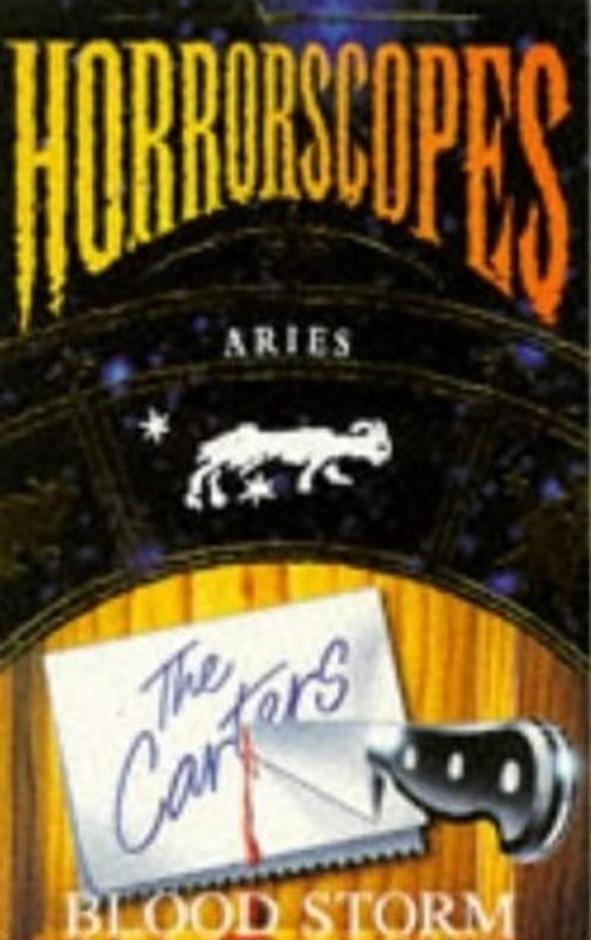
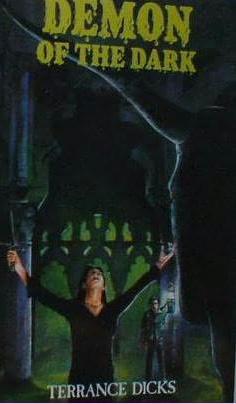
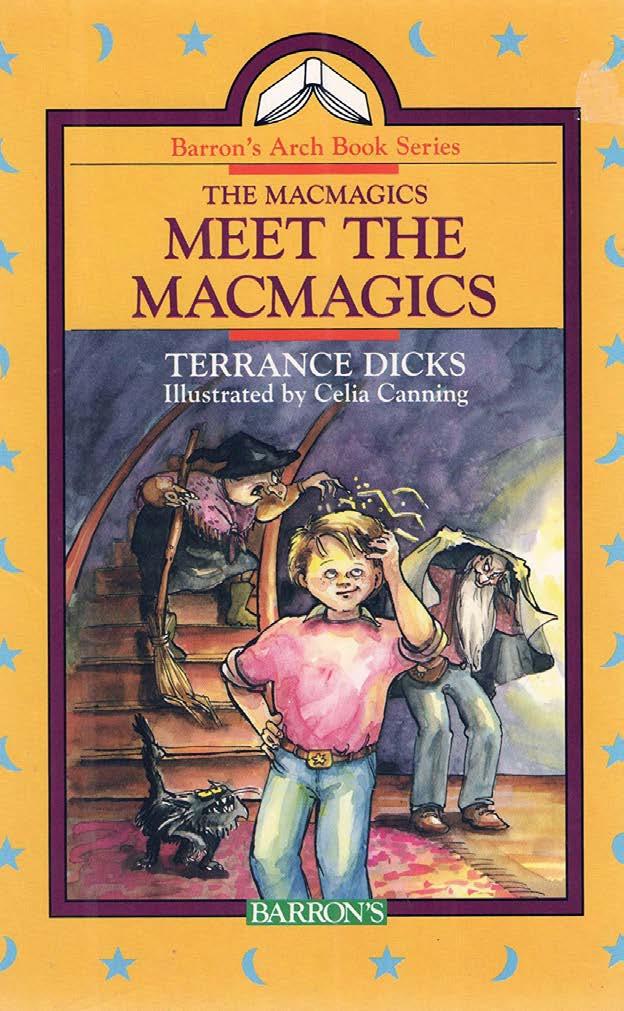
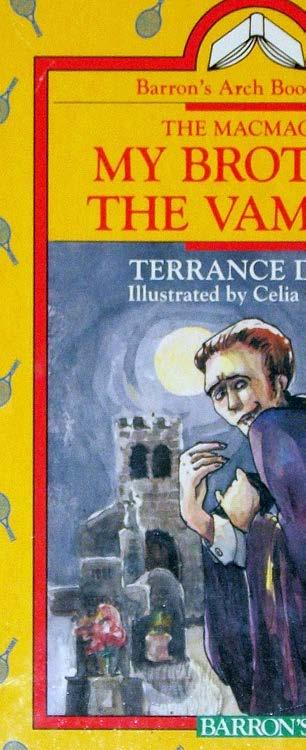
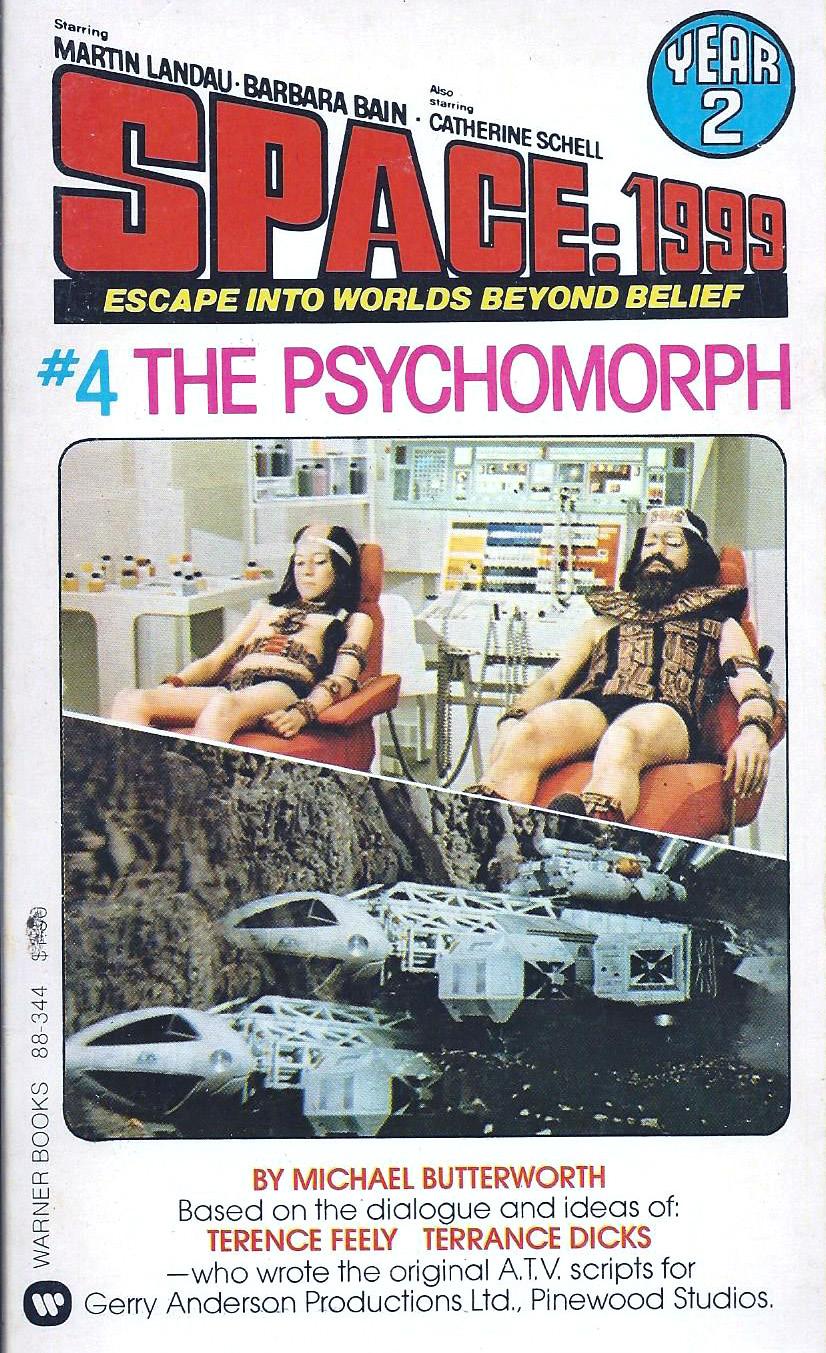

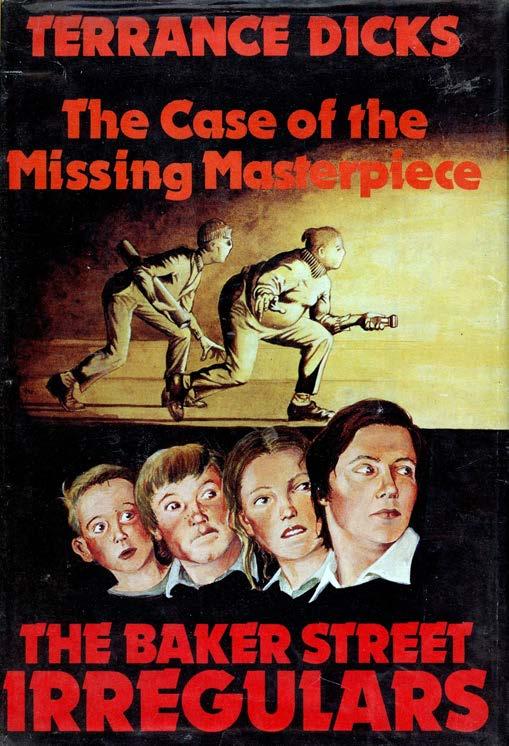



My answer machine was bleeping when I got home. This was 2012 and I had no mobile at the time. The message was from my agent and it was very simple and in many ways life-changing: ‘Would I like to be a monster on Doctor Who?’
You can guess that I didn’t waste time ringing back. I’d been a fan since childhood, and had even written two Doctor Who novels for BBC Books, Rags and Combat Rock. But all they could tell me was that I mustn’t be claustrophobic and mustn’t have a fear of heights. Well, that intrigued me. It wasn’t until a couple of weeks later that I found out how these potential phobias were related to the job in hand. The Third Assistant Director met me at the doorway of Upper Boat Studios near Pontypridd in South Wales, and the first thing she said to me was, ‘You know you’re going to be a Dalek, don’t you?’ I didn’t obviously. Excited? You bet. But I was still puzzled about the heights thing.
But first there was Dalek School. A group of us gathered in the studio to try out different varieties of Dalek that had been used throughout the series’ entire history. On our way to the ‘practice’ room, we passed through an eerily quiet chamber shrouded in near darkness. It’s difficult to communicate the weird thrill that ran through me on seeing what filled this dimmed room, silent, motionless, evil: lurking in the gloom was almost every style of Dalek that had ever graced TV screens, from the 60s to the 2000s. We made our way slowly and reverently between them, awestruck.
We waited in the practice room as ADs and Dalek wranglers wheeled out several versions of the Doctor’s arch nemesis for us to try our luck with. I climbed into a grey one with blue hemispheres that I recognised from the 60s. Inside was a label stuck to the inner collar with ‘Evil of the Daleks’ scribbled on it. Evil!! Oh the joy to be inside one of the actual Daleks that had terrorised my joint favourite Doctor, Patrick Troughton. Oh the dismay upon realising I was way too tall for it! Onto the next, the unwieldy paradigm Dalek in a lively red. I manoeuvred it around the room while the others watched, judging my driving skills. Unlike the Evil version it was obviously roomy enough, but pretty cumbersome. And so to the Bronze Dalek, created for the revival in 2005. It fit like an evil glove, and was a real pleasure to operate. Deal done.
It was during this ‘Dalek School’ that I met friends that would work with me on many Doctor Who episodes to come, most entertaining of all being Richard Highgate, who joined me at the BBC Proms last August, storming around the Royal Albert Hall as a Judoon while I terrorised the conductor as the sole Dalek - bronze of course. Matthew Doman was also there, soon to be a great friend. I didn’t trust Matt at first though: he turned up in a Jaguar for God’s sake! Flash git.
A week or so later the first day of filming arrived, and the reason for the instruction regarding not being afraid of heights became apparent. For the morning I was to be one of
the corpses in snowsuits found by Matt Smith’s Doctor in a crashed spaceship in the mountains. My first ever action on a Doctor Who set (the episode being of course ‘Asylum of the Daleks’) was to climb a rope ladder as the reanimated corpse, along with my new pal Richard. Scene complete, I was then led onto another set where a row of seats awaited me and the four other Dalek-animated corpses. This was the interior of the crashed spacecraft in which we had to come to life and attack the Doctor and Amy Pond.

My first meeting with Matt Smith didn’t go too well. He decided to rap me on my thinly latex-covered head to punctuate his words as I sat slumped in the seat of the craft. Let’s just say he was a bit energetic in his rapping, in a scene which took several takes, resulting in me soon developing a headache. Then we began to slowly move, a real horror film moment that was scuppered in the final edit by being rushed and resulted in not being atmospheric enough. Perhaps they were worried it was too scary – a problem I would encounter again as another space corpse in ‘Oxygen’.
Back to ‘Asylum of the Daleks’, and I was chosen as the corpse who was to attack Amy and snatch a bracelet ‘key’ she was wearing on her wrist. All good, except that with the very limited vision afforded me in the monstrous mask my wildly groping hand settled on Karen Gillan’s right breast instead of her wrist. Uh oh! Visions of being immediately thrown out of the studio and headlines hitting The Sun the next morning: Doctor Who Monster Sexually Assaults Star!
Instead of this happening however, Karen seemed completely unfazed by my clumsy fumbling and in the next take the bracelet was grabbed instead of her boob! Not only that but in between shots Karen’s hand suddenly found mine, clasping it, and we stood in the cockpit door like two very weird lovers!
Things got even stranger not long afterwards. I was placed
in between Karen and Matt Smith, and Matt quite obviously (and entirely understandably) was a little smitten, shall we say, with the beautiful Karen. He flirted with her unashamedly, and one of his methods of making her laugh was to lean against me (still clad in my skeleton corpse costume) and pretend to pick his nose. I took this for about ten seconds and then let fly with: ‘What the hell do you think you’re doing?’ Silence in the studio for a sweaty handful of moments. Another headline flashed through my head: Doctor Who Monster Gropes Karen Gillan And Abuses Matt Smith. Then Matt was patting me energetically on my shoulder, apologising profusely like an anxious to please puppy. ‘I didn’t mean anything, big man! I wouldn’t be so rude!’ Karen swooped to his rescue too, apologising equally profusely. What neither of them could see of course was that behind the mask I was grinning like that cat from Cheshire. Got ya!
The years went by, along with the episodes I’ve appeared in (23), but I never forgot that first highly entertaining meeting with a Doctor and his companion. Though things remained just as exciting …
After Matt Smith there was the lovely Peter Capaldi, who came into the RAF base where we were filming ‘Into the Dalek’ on his day off just to see the villains from Skaro. He skipped up to us like a happy schoolkid, shook my gun stick enthusiastically as I waited on the studio floor inside my Dalek. Then there was David Tennant, who ran up to me when I took the form of the Third Doctor (wearing his actual original costume too) on ‘The Day of the Doctor’, equally childlike and enthusiastic, asking if he could take my photo!! Er, shoudn’t that be the other way around, Doc? Following this came the lovely Jodie Whittaker, hugging everyone on the set of ‘Spyfall Part Two’ except me, which troubled me until I realized why: I was dressed as a Nazi Officer! No-one wants to hug a Nazi.
She certainly made up for it on ‘Legend of the Sea Devils’, though. I was asked to head to set along labyrinthine dark corridors, with cables trailing along the floors, as if put there purely for the purpose of tripping up the monsters. As I groped my way along in my Sea Devil costume, trying to peer out through the latex mouth in the gloom, I collided with someone. ‘Ey oop. You alreeet luv? Ma fault, yer can’t see where yer goin,’ can yer?’ Of course, of all the people to stumble into it had to be the Yorkshire Doctor! She then proceeded to thread her arm through mine and lead me all the way to set. Loved her ever since, even when she told me ‘You Cybermen can’t shoot for shit,’ on ‘The Power of the Doctor’!
So many tales I could tell, but they’ll have to wait. I’ll finish by saying that being a Doctor Who Monster can be difficult, tiring, sweaty, crazy, but beyond all else, exhilarating. I wouldn’t swap my time terrorising the Doctors and their companions for all the power in the universe they always denied us …



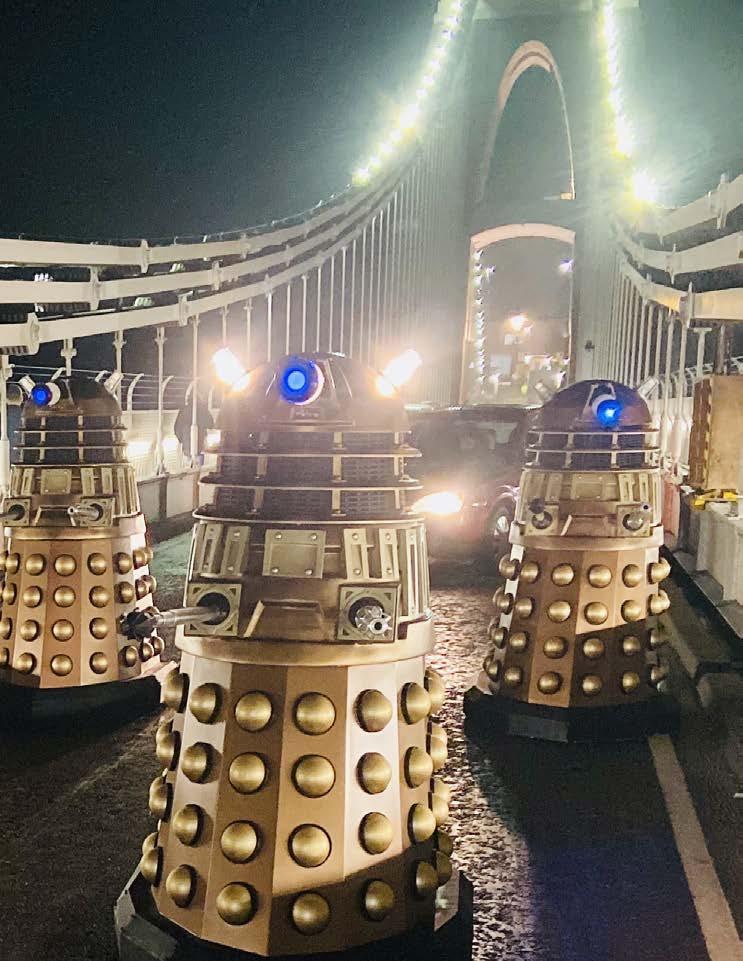

Writer Rhys Hughes casts his mind back to the seventies and to a time when Doctor Who was very good at influencing growing minds …
I was an avid enthusiast for Doctor Who at an early age. It was probably the biggest influence on the development of my imagination. There were other TV shows I had a passion for, notably The Goodies and Star Trek, but Doctor Who was the apex of the pyramid of my youthful watching enjoyment. And this reference to a pyramid is very apt, of which more later. The show colonised my soul at a deep level and this remains true even if souls are proved not to exist.
The trouble is, I can’t pinpoint when I began watching the show. There must have been a time when I sat down and watched it for the very first time, but I have no idea when that was. I suppose it was during the Patrick Troughton years, for I do recall my grandmother telling me in the early 1970s that I had been watching it for most of my life (all five or six years of it), but as far as I’m concerned I grew up with Jon Pertwee and he is the Doctor I secretly still regard as the ‘true one’, the archetype from which all others are clever or distorted variants.

I must have seen many episodes that I no longer remember at all. A few years ago I watched episodes that I might have seen when they were first broadcast, in an effort to jolt my subconscious, but no buried memories emerged as a result. Nothing in the episodes was familiar. At no point did I jump up from my chair and exclaim, ‘Yes, I know this one!’ No chords were struck, however faintly, by the plots and the sets and the characters or even the monsters. With one exception. That exception was the thing with dangling tendrils from ‘The Claws of Axos’. The sight of it running along like a hippy triffid resonated with me. I tended to invent my own names for monsters I had difficulty pronouncing (or whose names I didn’t know) and I am sure that back then I called this marvel ‘the spaghetti monster’.
The golden forms of the Axon humanoids also seemed vaguely familiar but I can’t be confident that I am not conflating them with mental images produced by reading the novelisation a little later. My enthusiasm for those novelisations has confused the situation somewhat, for I devoured them and particularly enjoyed stories that were chronologically before my time. I run the risk of mixing up knowledge taken from the books with my memories of the TV show. Thus I regard ‘Spearhead from Space’ as one of the finest adventures in the Doctor’s history but I’m dashed if I can honestly say I saw it when it hit the screens for the very first time. Yet maybe
I did. It is not utterly implausible. The novelisation certainly was one of my favourites. It was one of the few books in the series with a brown cover (not sure what was so special about that, but it seemed more adult and dignified somehow) and it carried a blurb, I can’t remember who from, that also said something along the lines of this adventure being his best. That blurb may have confirmed my feelings of admiration or it may have generated them. I was very impressionable.
If my very hazy vision of ‘Axos’ is a true memory, then it must be the very earliest fragment of Doctor Who that I recall. But if I am mistaken on this, then the dubious honour of being the earliest fragment belongs to a story I haven’t identified, though it might be ‘Colony in Space’. Essentially it consists just of a couple of creatures with skin the colour and texture of fudge. They were in a cavern or an underground room of some kind, and in the school playground I was extremely eager to tell my friends about ‘the sticky monsters’ I had seen the evening before. They knew what I was talking about, so they must have seen it too. None of us knew the proper names of those entities and I suspect I will never find out for sure. I have examined stills from every early Pertwee episode and can’t quite match the monsters to anything in those photos. The Primitives from ‘Colony in Space’ remain the most plausible candidates. My imagination has probably warped them into something rather different. Maybe the sticky monsters weren’t fudge faced at all. Perhaps I was simply eating fudge at the time. Memories are extremely deceptive.
Another difficulty is that the chronology of the early episodes that I do remember watching is unclear in my mind. One can’t argue with the facts but if I had never seen documentary evidence that ‘The Daemons’ came before ‘The Sea Devils’ I would have sworn it was the other way around and this is because I remember ‘The Daemons’ far more clearly. I can still picture very vividly indeed the form of Azal expanding into giant size. It never registered that he was an alien who only had the appearance of a demon. I assumed he was the Devil himself.
I found ‘The Daemons’ to be an unsettling story but it didn’t truly frighten me. It is now a cliché that the show scared children, yet I found the daleks, cybermen and ice warriors to be rather jolly monsters. On some level I was rooting for them. I felt the same way about the Master. His cosmic struggle with the Doctor was in the nature of a game or sport, and I liked him. This doesn’t mean that I wanted him to win but simply that I thought he was a fun adversary. ‘The Three Doctors’ story also unsettled me in its basic premise, but I was too enthralled by the torrent of superb ideas in that story as the plot unfolded to be too upset by the imminent destruction of the universe. The astonishing ideas cancelled out the horror.
Yet two stories did make my flesh creep. Both would have had me hiding behind the sofa (the traditional refuge of the young viewer) if only our sofa hadn’t been flush with the wall. The first of these stories was ‘The Green Death’. The hideous contagion and giant maggots were shocking to my young mind. The fact the story was set in my beloved Wales amplified the effect. But I missed the ecological message. For me, this story was pure horror, on a different level to anything I had seen in the show before. I was mildly traumatised by it, I suppose. I waited to see if any part of my body would start glowing green and I was relieved when it didn’t. Doctor Who changed for me at that point. It had become dramatically less safe.
The other frightening story was ‘Pyramids of Mars’. I can state with certainty that this story that affected me more
strongly than any other. Sutekh, the imprisoned entity of immense power who is on the verge of freeing himself, is the greatest baddie in the show’s history, for he has an authentic aura of evil about him. I wonder if the creators of that concept had somehow inadvertently tapped into a genuinely dark force. There was no doubt in my mind that if Sutekh escaped, the universe was done for, and the Doctor doomed. I never felt comparable malign strength in any other villain, not even in the extremely dangerous renegade time lord Omega, who I concluded was justified in his schemes for revenge. This is just a personal perspective, of course, but Sutekh is the ultimate bad guy, and I owe the most potent physiological reaction of my entire Doctor Who watching career to him alone.
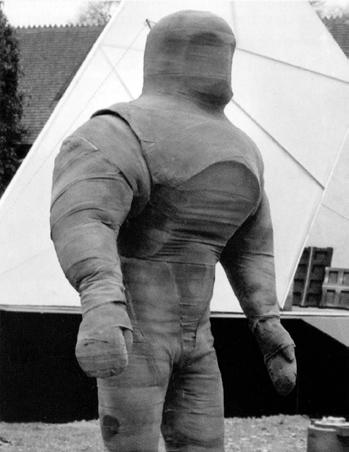
How many other viewers agree with me on this, if any, remains to be seen. The only other occasion I felt a frisson of fear even remotely comparable to that produced by Sutekh was three years later in ‘The Stones of Blood’ but at that stage I was twelve years old, too grown up to admit fear even to myself and I quickly got a grip on my emotions. ‘The Stones of Blood’ reminded me of another TV serial, Children of the Stones, broadcast in early 1977. I found that ancient pagan magic filled me with far greater dread than grotesque alien lifeforms.
‘Pyramids of Mars’ was a Tom Baker story, of course, and so loyal was I to Jon Pertwee that I initially refused to accept the third regeneration at the end of ‘Planet of the Spiders’. I declared that from now on I wouldn’t watch the show. To save face in front of parents and grandparents I forced myself to miss the first two episodes of Baker’s first story (the one with the giant robot). I had cut off my nose to spite my face and now I was in an agony of suspense. At last I was forced to admit defeat and to embrace Baker. After only a short time he grew on me until I had no choice but to consider him almost perfect. Objectively he was even better than Pertwee, but I can’t bring myself to make a public declaration along those lines. Sentimental feelings are powerful catalysts in our aesthetic judgments.
My adoration of the show was so great that I had an almost visceral desperation to be involved in its production in some or any capacity. Just waiting for the show to come round once a week was frustrating. I decided to write my own scripts and send them to the BBC. Having no knowledge at all of how to do this, I merely wrote on one side of a sheet of paper a garbled synopsis for a new adventure. I sent it to the BBC in an envelope with a second class stamp and was convinced that my story, duly credited to me, would appear on TV in the next week or so. I was baffled when that didn’t happen
I then moved into the design of new monsters, but I wasn’t much good at this. My designs ended up looking the same, cuboid robots on wheels with tentacles. When I made a harder effort, I merely produced a robot with curves. Michael Hill, one of my best friends at school, told me that his father was taking time off from his job as an industrial research chemist to work as a Doctor Who extra in ‘Death to the Daleks’ and that he was one of the Exxilons. I was enormously impressed by this, though it was almost certainly untrue. I didn’t want to be just an extra. What I really wanted to be was Aggedor, the Royal Beast of the planet Peladon, not an actor inside a furry costume but the creature for real. That proved to be impossible, though I willed it with all my might to happen. I’m still human.

My disappointment was eased by the fact my sister, on closer inspection, seemed to be the spitting image of an Ogron (from ‘Frontier in Space’ and other stories). She disliked this comparison and I was amazed by her ingratitude. It was a compliment. But she refused to see it like that. Finally the only way I felt I could get more deeply involved was to mimic the characters. I don’t just mean the obvious characters, such as the Doctor, Master, Brigadier Lethbridge-Stewart, but any character at all. In the novelisation of ‘The Daemons’ one of the hapless policemen who comes to a bad end is described as liking apricot jam more than any other flavour. I loathed apricot jam. I was a raspberry and strawberry boy. But I deliberately changed my habits and forced apricot to become my favourite. A casual remark in the book led to me exerting my will over my inclination so that the middle jam tart in the box, the formerly shunned orange one, became the most treasured. To align my entire life with Doctor Who was my goal, a form of unconscious sympathetic magic that ended with me learning lines of dialogue from the books and quoting them in full at adults when the opportunity arose, however inappropriate the occasion.
These novelisations were almost as important to me as the show itself. The first one I obtained was Doctor Who and the Cybermen. This was the first proper book I ever read. Near the beginning the Doctor warns his companions to walk carefully on the surface of the moon and not to stumble and
fall in the reduced gravity. ‘One tear in the suit and you will suffocate,’ he says, or words to that effect. But I misread the word ‘tear’ (rip) as ‘tear’ (water from the eye) and I was greatly surprised that to cry in a space suit meant death. So this was why no female astronauts had been sent to the moon by NASA! I was delighted with my logic.
The second novelisation I obtained was Doctor Who and the Crusaders but I was defeated by it after the first few pages. It seemed too literary and also there appeared to be no monsters at all in the story, and so I put off reading it for several years. When I did finally get round to reading it, I discovered that it was one of the most enjoyable of the books, and that its author, David Whitaker, was the very first writer to produce a Doctor Who novel. He was perhaps the best too. I found only Bill Strutton and his Doctor Who and the Zarbi novelisation to be of comparable high quality. These two writers had a control of their prose and a coolness in plot delivery that I would later find in the novels of John Wyndham. This doesn’t mean that I dislike the other books. I love them all, to a greater or lesser degree.
The novelisations allowed me to savour the adventures that were broadcast before I was born, but also clarified plots of stories I had watched but misunderstood. There were a number of excellent science fiction ideas that I discovered for the first time in these books, and in the TV show itself, of course.
‘The Three Doctors’ introduced me to the notion that a single object or (person) can exist in several forms simultaneously in one place and time. ‘Carnival of Monsters’ (absolutely one of my favourites) taught me that large biospheres can be contained in a small space and run on endless loops. Most relevant of all to the world as it currently is, ‘Invasion of the Dinosaurs’ gave me my first warning that Earth was at risk of being irreversibly polluted to a point where it would be no longer liveable. This story also impressed me with the trick of the fake spaceship, an underground bunker in which Sarah is held hostage, believing she is on her way to the stars. Such concepts and twists helped prepare me for the mind-blowing works of visionary writers like Philip K Dick, Philip José Farmer and John Crowley, who I would discover in my teenage years.
The greatest single moment in all of Doctor Who for me,
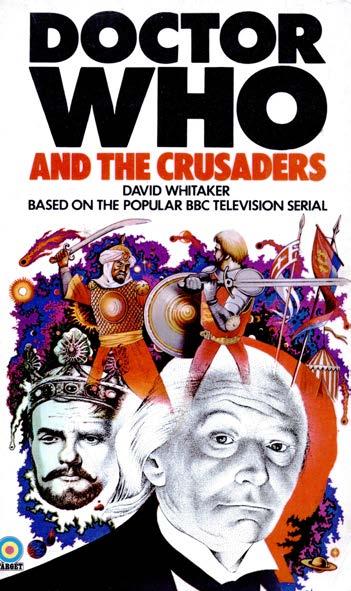
however, occurs again in ‘Pyramids of Mars’ and is the scene in which Sarah is trapped inside a death chute and the Doctor has a choice of two switches to press, one which will release her, the other cause her death. There are two guardians nearby, one programmed always to lie, the other programmed always to tell the truth. The Doctor is allowed to ask one of them one question, but he doesn’t know which guardian is which. His solution? He asks one of them (it doesn’t matter which), ‘Which switch would the other guardian point to if I asked him to indicate the one that will let her out?’ The guardian points at one of the switches. This is the switch that the other guardian would have claimed was the safe one. The Doctor reasons as follows. If he has asked the guardian who always tells the truth, then the indicated switch is the wrong one, because the liar would have pointed at the fatal one. But if he has asked the guardian who always lies, then the indicated switch is still the wrong one, because the truthful guardian would have pointed at the other one, and the liar is lying about this. Therefore the correct switch is the one not indicated. The Doctor presses it.
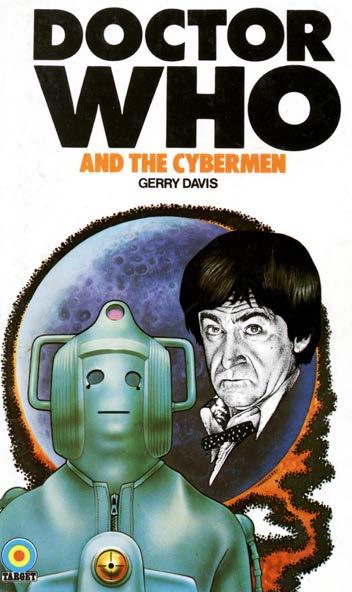
This type of puzzle is called ‘Knights and Knaves’ and I first encountered it in this episode of Doctor Who. It’s no exaggeration to say that it sparked my lifelong interest in logic puzzles. I helped to pay my way through university by writing logic puzzles for The Sunday Times among other publications. Just one of many things that I owe to Doctor Who, the greatest show of my youth.
Rhys Hughes has lived in many different countries. He currently divides his time between Britain and Kenya. He graduated as an engineer and currently works as a tutor of mathematics. He began writing fiction at an early age and has many books and stories to his credit, including the novel Captains Stupendous, and the short story collection The Truth Spinner. Fantasy, humour, satire, science fiction, adventure, irony, paradoxes and philosophy are combined in his work to create a distinctive style.
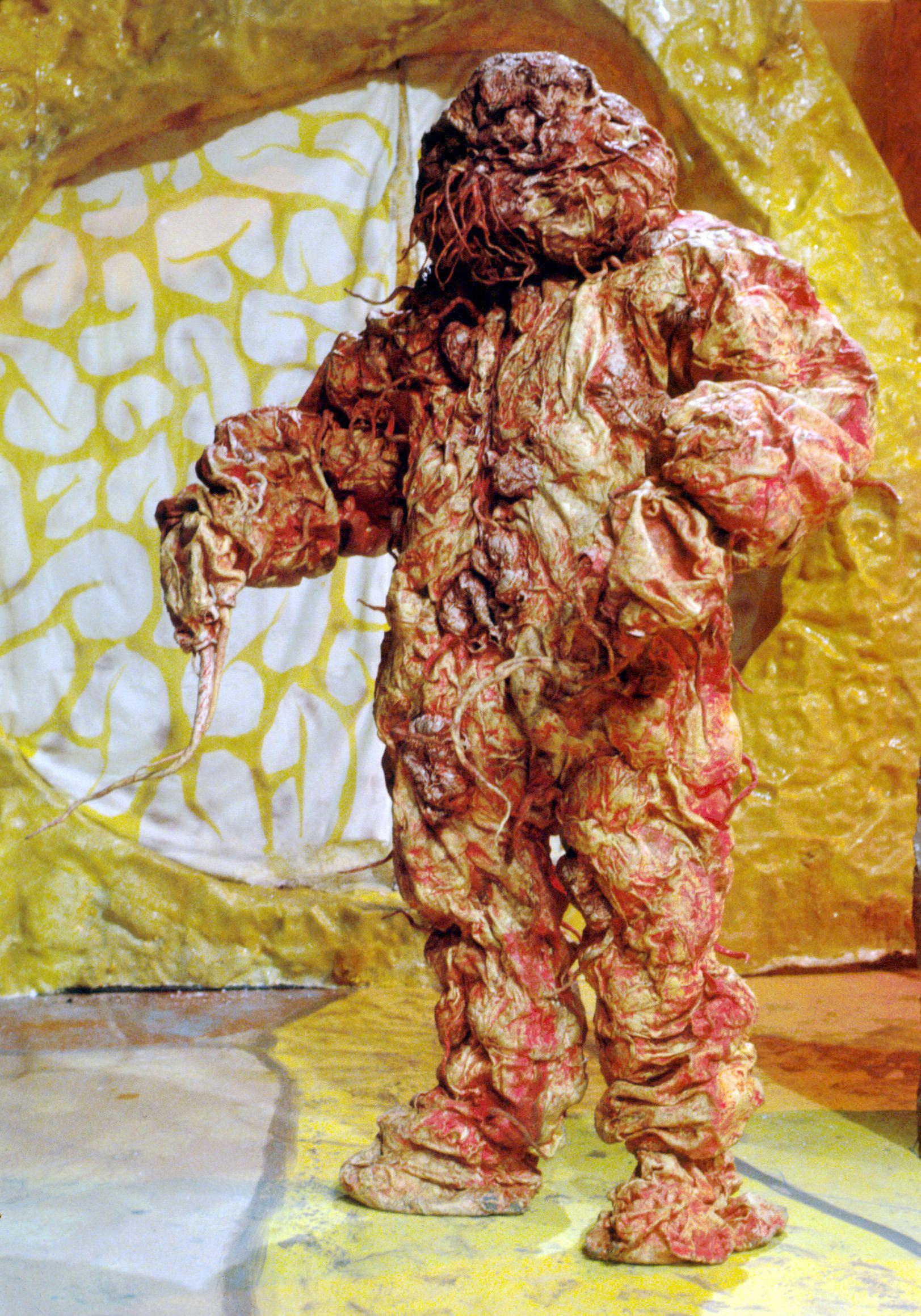


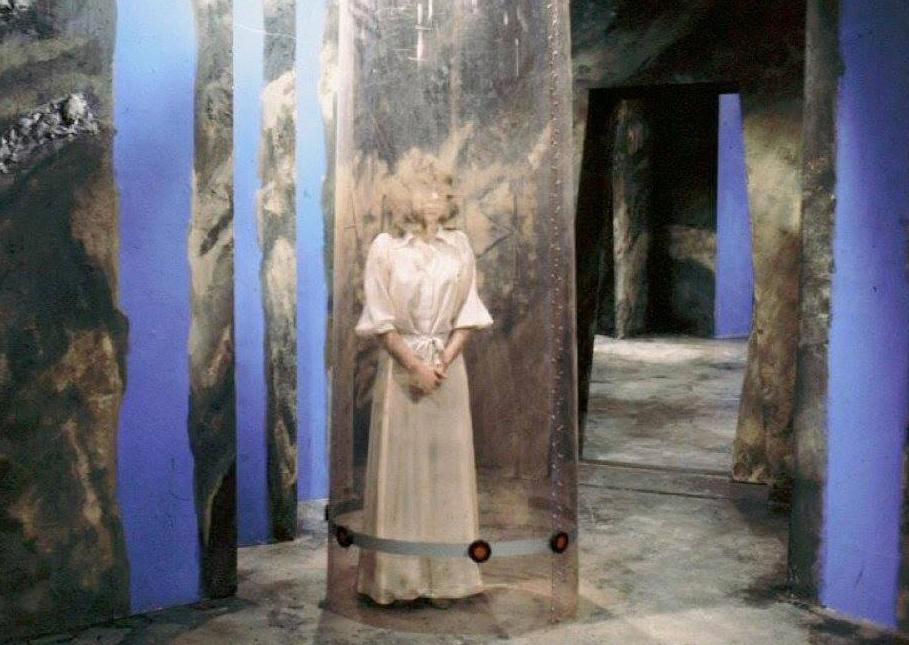




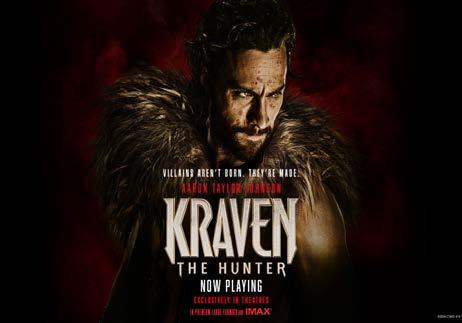
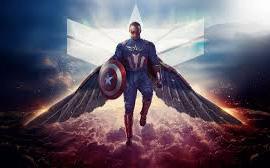
REVIEW BY
DAVID J HOWE
Longlegs is something of a strange film. It follows a path and turns out to be not quite what you expected come the end.
Nominally it’s about a female police detective, Lee Harper, who is hunting a serial killer who kills following a somewhat eccentric pattern of dates related to the birthday of his victims. But the killings all seem to be carried out by the father of the victim, who kills his daughter, but anyone else around also.
So there’s a pattern but no obvious motives until an occult element is thrown into the mix involving a life-sized doll which each victim is sent, in the head of which is a strange silver orb which seems to contain something and yet nothing.
As the plot unfolds, Harper finds that she is at the centre of events, and that the mysterious Longlegs, so called as by the name he signs coded messages left at each killing, has plans for her personally.
I enjoyed the film, though it is somewhat hard to work out what is happening. Not as hard as some critics made out though, and ultimately all becomes clear. The ideas are rooted in Satanic beliefs and in evil, as well as a touch of voodoo. There’s a healthy dose of Silence of the Lambs in here also, and while Nicholas Cage, who plays the deranged (or is he) Longlegs is not a patch on Anthony Hopkins’ Hannibal Lekter, there is much to appreciate and enjoy in his performance.
The explanations when they come are impactful for Harper and her family, and leave a lot of thoughts in the mind as to what happened next. I don’t think it needs a sequel though as this is complete in and of itself.
It’s telling that the BluRay I have has a very non-descript cover on it (same as the poster shown here). Obviously the marketing team had no idea what to make of this either.
I have often said that I have not seen a film with Nick Cage in that I haven’t enjoyed, and this does not break that run. Enjoyable and thought provoking, which is what every film should be.
Neil Marshall’s latest is a great monster action movie, with lots of thrills, spills, and of course monsters!
The basic idea is simple: a female air force pilot, Kate Sinclair (Charlotte Kirk), finds herself downed in Afghanistan and takes refuge in a huge underground bunker. Exploring she finds vats containing some sort of humanoids, and when one gets broken, the thing in it revives and chases her out of the bunker again, where she is rescued by friendly troops.
However they won’t let things lie, and are soon back with Kate to explore further, only to find that more of these genetically engineered nasties are loose, and set on hunting down and killing anything that they can find, either in the bunker or outside of it.
The film is great fun and the opening is fast and furious as we go from a crash in the desert to the bunker, escape and back to base … then there’s a slow section where we find out more about the soldiers and so on, before it’s back to the bunker and more deep underground shenanigans with the monsters.
The pace and action overcomes any concerns over casting or how many of these soldiers are just dreadful shots and you just get swept along with it. As a Saturday night with beer and mates movie, it’s perfect.
WEREWOLVES
REVIEW BY KAREN WOODHAM
What’s that? A movie about Werewolves starring Frank Grillo? Well, count me in. I’m checking out this new action movie that I hope has some bite to it.
Humanity is about to discover that its bite is far worse than its bark in this action horror.
A supermoon event triggered a global outbreak one year ago, transforming anyone exposed to moonlight into bloodthirsty werewolves for just one night. Now, as the next supermoon rises, a former marine and Global Rapid Response Team Leader Wesley Marshall teams up with scientists Dr. Aranda and Dr. Amy Chen to find a cure before humanity is lost, but as chaos and carnage unfold, Marshall must fight off killer beasts and risk everything to protect his family.

Werewolves is a fairly sinister movie when it comes to the story it tells. The test subjects who are being subjected to the possible change to Lycan give you the feeling of fear that they are about to undergo the transformation due to the Supermoon. There is an unnerving feel to the movie with the way it is shot and the lighting, plus the soundtrack is nicely done to bring in the tension in those moments that set you up for something that may be lurking in the shadows, which for me helped with the way the Werewolves plays out.
Werewolves is a well-polished production, although it may not be the best werewolf movie out there it’s certainly in my top 10 of Lycan-based movies.
There is a good transformation scene that looks and sounds great with bones cracking, flesh stretching and the screams of pain before the change into some good-looking werewolves that did remind me of Dog Soldiers, so that’s no bad thing.
Werewolves doesn’t slacken up on the action with Grillo doing what he does well when it comes to action movies and there are a few edge-of-your-seat moments, it’s all a bit of fun for 90+ minutes and if you do like werewolf movies it’s certainly one to check out.
Starring Frank Grillo (The Grey), Katrina Law (Arrow), Ilfenesh Hadera (Baywatch), James Michael Cummings (City on a Hill), and Lou Diamond Phillips (Courage Under Fire). Practical FX by Alec Gillis & Tom Woodruff Jr. the duo behind Prey’s predator, Werewolves is written by Matthew Kennedy (Inheritance) and directed by Steven C. Miller (Line of Duty).
KRAVEN THE HUNTER REVIEW BY CLIFF HOMEWOOD
Faster than a black SUV, more powerful than a laundromat, can climb tall buildings with a CGI pound.
Sony’s Cinematic Universe is dead. Kraven’s here to take away the corpse. That crazy idea of having Spider-Man villain movies without Spider-Man didn’t work, who’d have thought? We had a somewhat dodgy but successful Venom trilogy thanks to Tom Hardy’s hilarious Venom but then there were others. Morbius was the worst, a film without teeth. I seem
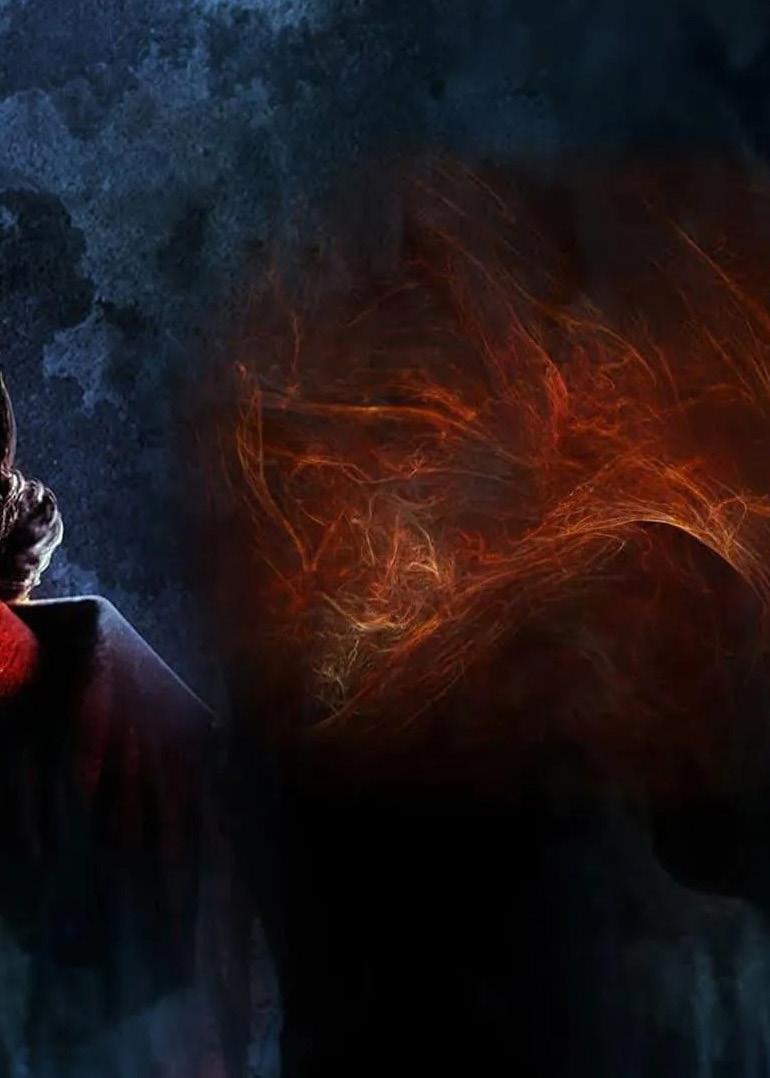

to be the only person that liked Madame Web, which felt the Spidey equivalent of Brightburn. Now Kraven comes out with terrible reviews and Sony launch, telling the world they’ve given up on this universe. Way to sell products Sony! The critics declared an incoherent storyline, but whilst I concede the point, I found it a reasonably good story. If you lose track of what’s going on; look, he’s chasing bad guys. It was pleasingly not bogged down by a love story. I went into this supposedly bad movie and found myself enjoying it, as did my friends. The weakest response? ‘Alright’. His issue? No good guys. Kraven’s a good guy. He’s like The Punisher, he only kills bad guys. Key thing here is if you’re an animal lover, early on it establishes if you slaughter them, Kraven kills you. This to me made him cool. If I was to sum Kraven up in two words, it would be Russian Tarzan.
The Russian element is a stereotypical one. It’s a hard as nails film set firmly in the criminal underworld. I enjoyed seeing gangsters being hunted by someone with superpowers. Kraven’s making a list, checking it twice to find out who’s naughty or nice. Goes a bit Rambo at one point when it wants to earn its hard R rating. I’m not into gangster films but this enjoyable superhero nonsense didn’t deserve to be kicked to the ground.
I’m a Spidey fan, but never got why the classic Kraven’s Last Stand was highly rated. Spider-Man has a rogue’s gallery second only to Batman and I am disappointed with their treatment. Kraven I liked, with an African feel, even though he’s Russian. One of the better Spidey villains is the Rhino, I hung my head in shame how they wasted Paul Giamatti as a battle bot monstrosity in Amazing Spider-man 2. This film stars a few Spidey villains including obscure ones (Calypso or the Foreigner anyone?) and Rhino is transformed and does transform. In a budget saving idea, Bane like he has serum going into him, but in a nice switcheroo this makes him normal. Rhino in the comics was a stupid thug charging into things, here he’s a calculating crime boss. Normally I don’t like character changes, but it was done well thanks to Alessandro Nivola, and I’d already been beaten by Amazing Spider-man 2. Reminiscent of The Batman as a similar gangstery feel. The Batman for some reason gets all the love, it started good but 3 slogging hours long. Calypso is the only female of note in the film and a two dimensional role. I’d still take her over The Batman’s horrific portrayal of Catwoman, an independent character you could control as much a cat, but in The Batman was just there to do batman’s bidding. Hollywood annoys with their diversity tokenism. The Black Panther is heralded then this has Russians played by Russell Crowe and Aaron Taylor-Johnson (the lead from Kick Ass). Oh, those Russians.
The film is a bit predictable, do you think they can keep Kraven in prison? But cool with it sometimes, what’s cooler than a jail break? And it has a sense of humour, in this scenario, the dialogue with his impressively imposing looking cell mate. I felt he could play Jaws (no not the Shark, that’s a stretch for any actor). Kraven’s powers are never fully defined, generally the way in supes films these days, why slow down with exposition when you can leave them usefully vague, animal like, like those of Steve Austin, the bionic man (enhanced eyes, strength and speed).
Aaron Taylor-Johnson was once in the running for playing Spider-Man, Kick Ass showed he’s a good choice. The more manly Kraven shows he has range, he is Kraven. Autocorrect wanted to call it Kraken the Hunter but I prefer Haven the Krunter, although Kraken is a film I want to see. But that film doesn’t exist yet, this one does, so why not see it?
HELLBOY: THE CROOKED MAN
REVIEW BY
KAREN WOODHAM
My first introduction to the character with the first movie on the big screen so I’d been looking forward to reviewing this one after our local cinema didn’t show it during its theatrical run, now fans of Hellboy will be delighted to hear that Icon Film Distribution is releasing Hellboy: The Crooked Man, the fourth instalment in the global franchise, on 4K Special Collector’s Edition, Blu-ray, DVD & Digital from 9 December.
Written by series creator Mike Mignola, Hellboy returns to the screen in a brand-new instalment of the global hit franchise that expertly blends action with chilling horror.
In 1959, Hellboy (Jack Kesy) is enlisted to aid rookie paranormal researcher, Bobbie Jo Song (Adeline Rudolph), in the transportation of a deadly creature. However, their mission soon goes awry when an accident leaves them stranded in the forests of rural Appalachia where a small community resides, haunted by demonic forces. With all clues pointing towards witchcraft, Hellboy and his allies must hunt down the source of this evil – the ‘Crooked Man’ who has been sent to Earth to harvest souls for the Devil.
I have to say that when the news was announced that we were getting another Hellboy film without Ron Perlman in the titular role I wasn’t too sure about the release, I love Guillermo del Toro’s first two films with their over-the-top look and creatures that just looked so amazing. Although I am a fan of his work, the third movie from Neil Marshall didn’t do anything for me and some of the CGI in the film were a little disappointing.
Hellboy: The Crooked Man is so far from the previous movies and even takes us back to the 50s with a rather fun opening of a train as Hellboy (Jack Kesy) and Bobbie Jo Song (Adeline Rudolph) are on a mission to bring back a creature to the B.P.R.D. (Bureau for Paranormal Research and Defense). But not everything goes to plan and they find themselves deep in the woods something is just not right as The Crooked Man is haunting the woods, this is where the film becomes a dark foreboding story that certainly gives you chills.
Director Brian Taylor (Crank, Ghost Rider: Spirit of Vengeance) has certainly taken the character back to the bare bones of the franchise, forgetting all the lavish-looking creatures and the CGI to tell a story. This adaptation of the character is dark and spooky, it becomes more of a supernatural thriller with a twist of horror to keep us entertained from start to finish, this wasn’t what I was expecting from the movie and it’s a refreshing change from the previous films and for me, it was much needed.
The darkness of the story and film itself could have been an issue but the cinematography from Ivan Vatsov works so well even in the darkest of scenes with plenty of definition to still be able to see what is going on. With lots of films and TV shows being dark these days sometimes it can be an issue but thankfully not with this release.
Sven Faulconer’s soundtrack also works very well to bring several moments of fear and dread, plus lighter moments.
The 4K release has some great special features as does the Blu-ray, but if you want to delve more into the film and behind the scenes, the cast and crew interviews are worth checking out on both releases.
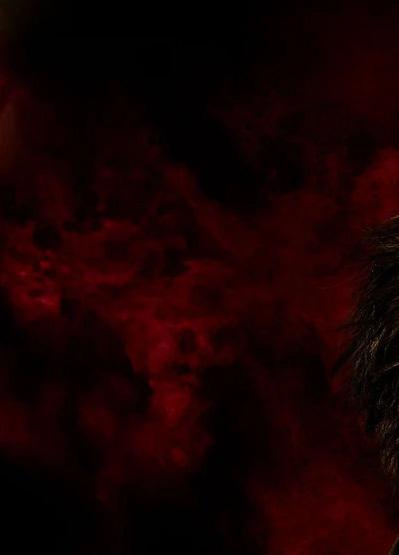
If you are a fan of the Hellboy comic books then this is a film that you may want to add to your collection, if you are a fan of the films as well then Hellboy: The Crooked Man is a refreshing change from the previous three films. It’s a fresh new take on the film franchise and I do hope that we get a sequel to this one with Kesy returning to the role of Hellboy.
NOSFERATU REVIEW BY KAREN WOODHAM
I managed to finally check out Robert Eggers’ Nosferatu at my local Cineworld, a film that has been getting high praise from those indulging in the new gothic horror. I wondered if the film would live up to the hype.
This new adaption of the vampire story is one that many who have seen the 1922 film will certainly be familiar with, the 20s film was based on Bram Stoker’s Dracula. The German silent horror film directed by F.W. Murnau has been a favourite with fans over the many years and I’ve loved the film since first seeing it in my late teens.
F.W. Murnau’s film is an unauthorized adaptation of Bram Stoker’s Dracula, with many similarities in the plot but with key alterations to avoid copyright infringement. The filmmakers changed character names, with Count Dracula becoming Count Orlok, played by Max Schreck, and shifted some story elements. Despite these changes, Stoker’s widow sued for copyright violation, leading to a court order for the film’s destruction—though copies survived, cementing Nosferatu as a horror classic.
Now over 100 years later Robert Eggers has brought back to life Count Orlok in such a wonderful and stunning-looking film that it feels that this version of the horror classic is a true tribute to Murnau’s film. We are treated to some amazing cinematography that looks stunning on the big screen and gives you a true gothic feel to what you are watching.
The colourising of Nosferatu is something that jumped out to me straight away with it seeming somewhat washed out of colour in certain scenes and then popping with a vibrant moment such as a fireplace being lit or the lighting in a part of a room, it just looks amazing.
When it comes to Eggers’ directing the film has such powerful moments from not only the cast but also with the use of the camera movements as we move across a room or follow a character to entice us into being on the edge of our seat waiting for something to creep from the shadows or catch us unwares!
The use of shadows plays very much into the fear in Nosferatu and this film is no expectation, there are some amazing sequences with the shadow play such as Orlok being seen in the shadow of the curtains but no sign of him behind them. Then there is the hand that stretches across the city, it’s a stunning shot that puts you at unease.
The cast for Nosferatu is perfect for their roles with Bill Skarsgard (It franchise, Barbarian) as the overpowering and terrifying Count Orlok, Lily-Rose Depp (“The Idol”, The King) as Ellen Hunter, Nicholas Hoult (Renfield, The Menu) as Thomas Hunter, Aaron Taylor-Johnson (Nocturnal Animals, Bullet Train) as Friedrich Harding, Emma Corrin (Deadpool & Wolverine, “The Crown”) as Anna Harding, and Willem Dafoe (The Northman, The Lighthouse) as Prof. Albin Eberhart von Franz.
It’s great to see Dafoe working with Eggers again and it was a little weird seeing him in this film as I kept thinking of him as

Max Schreck playing Count Orlok in Shaod of the Vampire (2000), but that soon wore off with Dafoe’s excellent performance. Lilly-Rose Depp pulls out all the stops with her performance and I have to say this has been one of my favourite roles that I’ve seen her play.
The shocker with Nosferatu is Bill Skarsgard as Count Orlock, the character design is somewhat grotesque and terrifying, as is the first time we hear his character speak, at that moment I had shivers down my spine.
Adding to the atmosphere of the film we get a truly amazing soundtrack from Robin Carolan, who also brought us the superb music of The Northman. Carolan’s music in Nosferatu is a joy to listen to throughout the film, it lifts the film further to the feel of the gothic genre and is the perfect accompaniment to Eggers’, dare I say it, masterpiece.
CAPTAIN AMERICA: BRAVE NEW WORLD REVIEW BY KAREN WOODHAM
I was so excited to see this movie after the first teaser trailer while I was at my local IMAX, so today, I headed over to see Captain America: Brave New World in IMAX 3D for my review of the latest Marvel Studios movie.
After meeting with newly elected U.S. President Thaddeus Ross, Sam finds himself caught in the midst of an international incident. He must uncover the reason behind a sinister global plot before the true mastermind causes the world to see red.
The movie takes us to the next chapter in the MCU after Falcon and the Winter Soldier, now Sam (Anthony Mackie) has fully taken on the mantel of Captain America and he certainly has big shoes to fill after Steve Rogers (Chris Evans), Sam isn’t a super-soldier, but that doesn’t stop him from kicking some backsides in some excellent action sequences that will have you on the edge of your seat.
It takes some getting used to seeing a Captain America movie without Chris Evans. However, in this penultimate film of Phase 5 of the MCU, we approach the conclusion of the Multiverse Saga with the upcoming Avengers 2.0 movies: Avengers: Doomsday and Avengers: Secret Wars. It feels like we’re hitting the reset button by introducing new characters that we haven’t seen on screen before. Yet, for those familiar with the comic books, some of these characters may be recognizable.
After a short while, I got used to Sam being called Cap and it didn’t take too long before I got used to seeing Harrison Ford playing President Thaddeus Ross, there is a nice touch where Sam mentions the new look that Ross has without the moustache! Ford has taken over the role of Ross after the death of William Hurt in 2022 and I have to say that I loved Ford’s portrayal of the character.
There have been several negative reviews about Captain America: Brave New World, I enjoyed every minute of it, I loved the characters with some great performances from Ford, Mackie and Giancarlo Esposito as Sidewinder. But when it comes to creepy villains I enjoyed the scenes with Tim Blake Nelson as Samuel Sterns, certainly looking forward to more from him.
But the major scene stealer for me was the Red Hulk, the introduction of this raging beast full of anger was pretty awesome and the fight sequence with the character not only
looked amazing on the IMAX screen but sounded brilliant as well.
It was also great to see Liv Tyler returning as Betty Ross and also we got a connection to 2008’s The Incredible Hulk, not only that we finally, yes finally, got a connection to another MCU movie that seemed to have been forgotten for a while, The Eternals!
Director Julius Onah (The Cloverfield Paradox) has brought us a fun, action-packed, movie that you don’t have to take too seriously and just have fun with it.

REVIEW BY
CLIFF HOMEWOOD
What if you could have a film with Guillermo from What We Do in the Shadows and Hughie from The Boys. Cool, right? What shenanigans. Oh, they are actors, Harvey Guillen and Jack Quaid respectively, and play different characters here, aww.
Companion is like an episode of Black Mirror: personally I would have preferred the retro-chic title Killer Robots! It does what it says on the tin! But away from such sensationalism, this is more of a serious piece. Well done. We meet a couple, they go to a party, meet another couple. So it goes. It’s set in a Humans-like world where we’re not sure who’s an android and who isn’t. Like that superb series it asks questions about having them as companions. How easily they can be manipulated for instance. Companion is a murder mystery, so is hard to say much about, you should discover for yourself the unveiling of the plot. Think of films like Blood Simple or A Simple Plan. Our protagonists spend most of the time at one location, which does include a forest you can try and escape through, and plot twists, as information is slowly revealed. Companion also has a healthy amount of humour in some of its situations, from a sympathetic human saying to their companion, ‘you are far more than just a fuckbot … but in the end, you are a fuckbot’ to some surprising human reactions. There’s some nice future slang in the way technology works its way into our language as it becomes part of our lives.
Companions feel real as we see people caring for them and they themselves are portrayed with real emotions. An id, a desire to be and to live. Blade Runner may have covered it with replicants, but it’s still good to see. After all we are just walking bags of meat. Like good SF it can be thought of as an allegory for taking control of your life, how love binds us and breaking free. Part of A Complete Unknown, the decent Bob Dylan biopic released the week before, is that he’s a free cat, refusing to be tied down by relationships. That obviously hurts those that care, like girlfriends, but what if it were an owner/slave relationship where you are programmed to love your owner? All this and there’s even some cool scenes reminiscent of The Terminator.
This film is advertised as from the creators of Barbarian. That misleading claim refers to the Producers. Producers choose and finance projects and are the ones that receive the Best Picture Oscars. I would contend that the writer/director is the artistic creator, although this can be a grey area. The famous horror example is Poltergeist with Steven Spielberg (1941 and The Lost World: Jurassic Park) as Producer and Tobe Hooper (Texas Chainsaw Massacre and Salem’s Lot ‘79) as Director. It’s still unknown how much input Spielberg had, did he vest control? (Why would he vest anything? This isn’t Wallace and Gromit). Barbarian’s Writer/Director Zach Cregger was eyeing to direct but after Barbarian’s success he moved on and this became the directorial debut of its writer, Drew Hancock. This is not as OTT as Barbarian which lost credibility in its finale but was a good joy ride. This feels more serious and thoughtful, not Barbarian’s rollercoaster though it does have tense moments. The acting’s solid, and Hancock says about Sophie Thatcher, ‘Five seconds into Sophie’s performance, my heart was pounding so fast because I was thinking about a future where this movie didn’t have her.’ Companion has the same flaw as a lot of horrors, why did no one call the cops? Maybe it’s a satire on modern society. These days you could kill many people before the emergency services turn up. Companion is an interesting film with some good action scenes, and a nice sense of humour.
WOLF MAN
REVIEW BY CLIFF HOMEWOOD
I became interested in this film having discovered that it was by the writer/director of 2020’s The Invisible Man, Leigh Whannell. Only 50% of critics loved Wolf Man, so I started to wonder if it was the amazing acting of Elizabeth Moss which made The Invisible Man so good!
Wolf Man starts like most good horrors, with scene setting, we get to know the family. Blumhouse is currently the most profitable studio, it knocks horrors out cheaply and quickly, keeping the price down by having no stars. The wife in Wolf Man is played by Julia Garner who was great as Ruth in Ozark. Once we get to know them, they get besieged by creatures of the night. You wonder: would you be safer in the basement, more protected but there’s only one escape route, or not? It made me appreciate Night of the Living Dead which encapsulated such qualms perfectly. That’s a great example of the siege pic which this is. As we know from the title it’s a Wolf Man (or Men) causing the trouble this film can be best described as Dog Soldiers meets The Fly.
It’s tense, we hear every knock and shake of the shutters. There’s something out there trying to get in, we can’t quite see what it is. As is often the case in horror I find myself questioning the characters’ decisions, who knows what you would do in the blind face of terror (I don’t know why terror can’t see, it just can’t). Wolf Man does not feel original, just a recycling of older films. Leigh Whannell was inspired by Cronenberg’s The Fly, ‘What The Fly did… was bring the
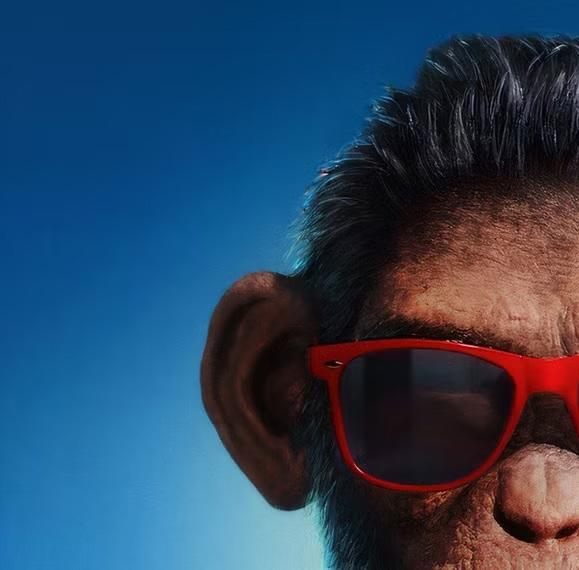

tragedy out of these practical effects. It wasn’t a joke in The Fly. It was there to illustrate someone who was dying of an illness. I was like, “I’ve got to do that.”‘ He also uses a cool wolf-vision: dayglo with glowing eyes and indecipherable sounds. When we finally see the wolf man it isn’t the stereotypical Universal monster look, which feels a bit dated now. The ‘Pierce’ delivery truck is named after the original’s make-up man, Jack Pierce. In the way of good horror you will wait a while to see him. Horror fans will be pleased to hear it’s prosthetics, there’s no CGI used. But oh no, they aren’t going to use that ending are they? Oh, they have. The daughter is named Ginger as a reference to the superior werewolf pic Ginger Snaps. The last wolfman movie was in 2010 and was forgotten. Whilst enjoyable, I sadly think this film will meet the same fate.
A BETTER MAN
REVIEW BY CLIFF HOMEWOOD
The film starts with a black screen while Robbie Williams says ‘I’m going to show you me as I see myself’ before revealing that he is played by a chimpanzee in this movie. Hence his emotional state is front and centre throughout the picture.
He has also said there were too many biopics coming out and they needed a gimmick to stand out. He was asked what animal would he be, and then went with it.
As a child I took having good parents for granted, and as being normal. As an adult I realise that I was lucky. Robbie Williams was not nurtured like I was. Films like this and the superb Eddie Izzard doc, Believe, point out what a lack of a good set of parents can do to your psyche. In psychology I learnt girls that grew up with an absent father often become flirtatious, feeling the fault was theirs: why did Daddy not love them? Why couldn’t they keep that man in their life? So they spend a lifetime surrogating, to fill the hole Daddy left in their psyche. This film shows Robbie’s demons, often as monkeys, and a similar feel of ‘why wasn’t I good enough?’ His battles with his mental health are well portrayed, scenes are often metaphoric, so if you require a film to show literally what he’s going through you are out of luck and maybe as lost as the inner turmoil inside his head. I like this free association, I found the film artistic, it reminded me at one point of The Fisher King, one of my favourite films, where Perry’s mental state is portrayed by a Red Knight on horseback charging at him.
There’s a good three-part documentary about Robbie Williams on Netflix to which this film is a nice companion. The documentary covers exactly what happened to him whereas this film is more why, a different story. The documentary’s based on actual footage, therefore telling the story of adult Robbie, the film goes into his childhood where all men are formed. Some accused the documentary of being solipsistic, but he has a good story to tell. This film shows if you don’t love yourself how are you going to care for others?
It becomes about you. He can be a right dick sometimes, both film and documentary show it. Someone in pain lashes out. This is the story of a man falling apart on stage, which is perhaps the story of all musical artists. Their lives reduced to a non-stop itinerary of touring to build a fanbase, to make money and become a success. Endless days of going on stage, packing up and getting on the tour bus/plane to the next destination to set up and do it all again. Performers often turn to drugs to get through and start to fall apart. In the documentary his manager when asked ‘how do you get through it’ responds ‘one day at a time’, if you tried to look further ahead to how many shows you’ve yet to do you would go mad. One day at a time is the only way. That manager seemed nice and not in this film, which is about Robbie’s rise. He now seems to be in a good place, but to get there, the music industry is not a nice journey. Managers are generally not nice people, if they were they would tell the talent to give it up, it’s not worth it, your mental health will suffer. But would someone hungry for fame listen?

The film is emotional and serious and the fact he is portrayed as a monkey and his Dad is played by Steve Pemberton endeared me at the start. He says he’s a natural born showman, I’ve seen him live and can attest to this, on the same bill I saw David Bowie, who just sat in a chair and sang. Robbie worked the audience. The fact he has himself portrayed as a monkey in his biopic shows this, making the film more visually interesting. His songs are woven in nicely and it never dragged. Like the documentary it’s Robbie’s story and everybody else is just guest stars, you don’t get to know much about the boys from Take That for instance. But the fact that Robbie is willing to tell his story warts and all, provides for some good dialogue pointing things out like good art coming through pain.
This is the second recent biopic to use an varied method to tell the story, Pharrell Williams has just had his life story told in Lego. The film is imaginative and funny in places (I loved one of the synchronised dance pieces). How much you like it may depend on how much you like Robbie.


James Herbert OBE (April 1943 – March 2013) was not only Britain’s number one bestselling writer of chiller fiction, a position he held ever since publication of his first novel, but was also one of our greatest popular novelists. Widely imitated and hugely influential, his twenty-three novels have sold more than fifty-four million copies worldwide, and have been translated into over thirty languages, including Russian and Chinese. He was awarded an OBE by the Queen for services to literature. His final novel was Ash, published in August 2012. In this issue’s visit to the Vaults, we have two interviews by David J Howe with Herbert: one from 1999 about his novel Others; and a second from 2001 concerning the novel Once…










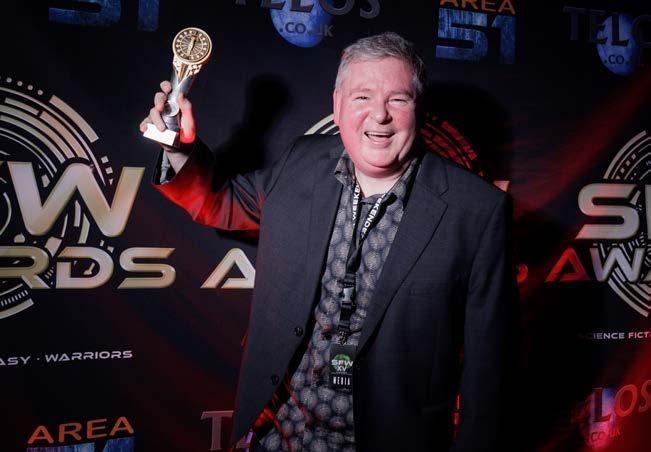



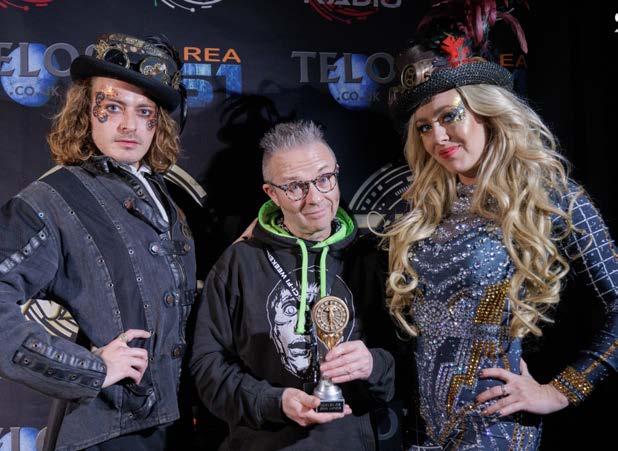
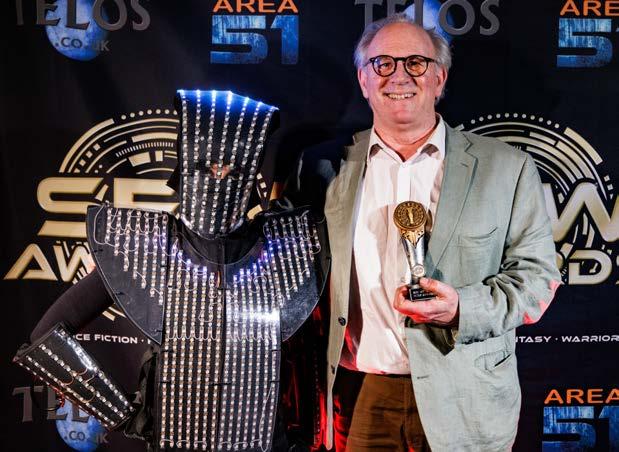


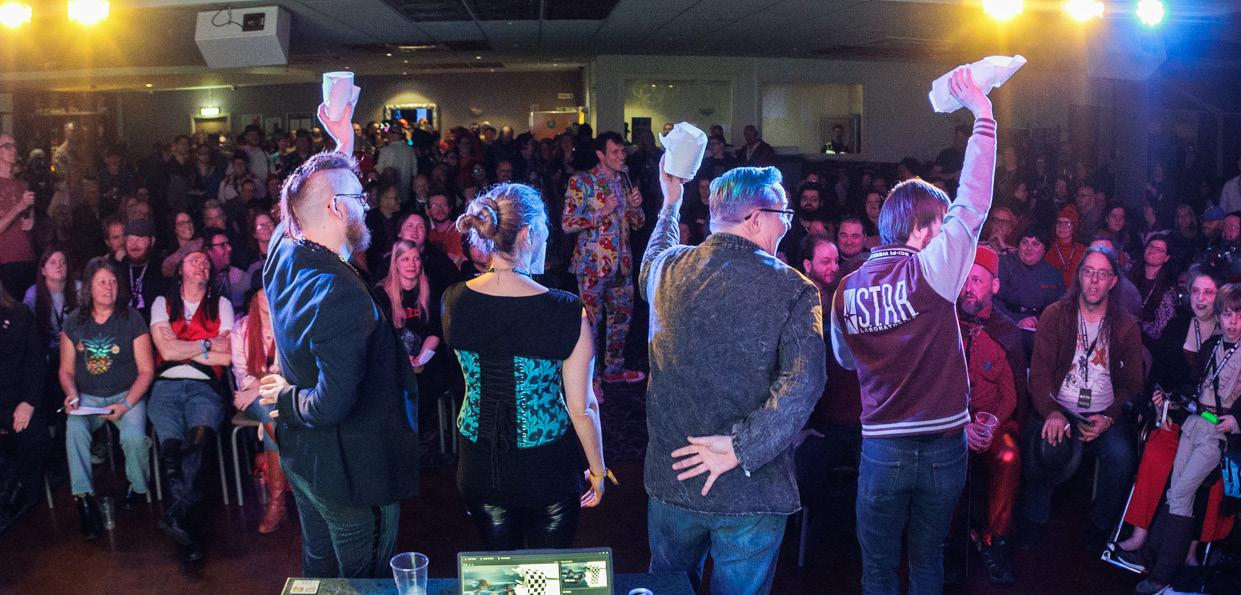

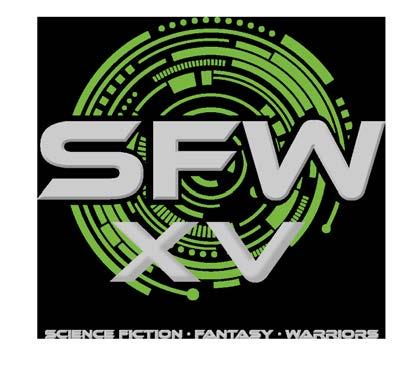

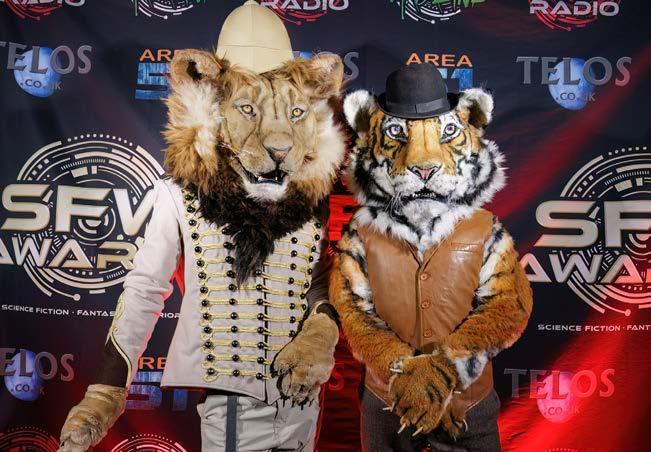

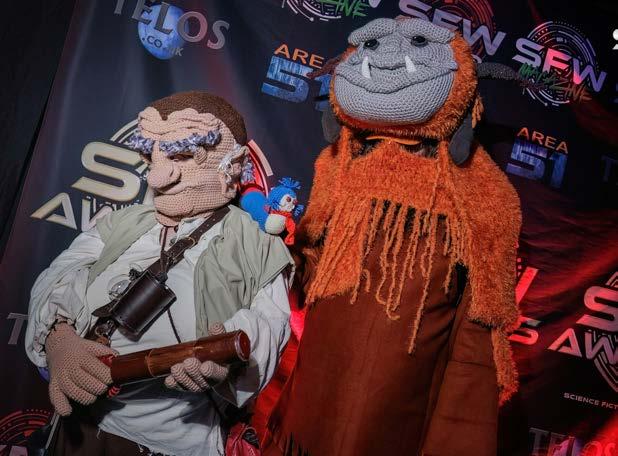



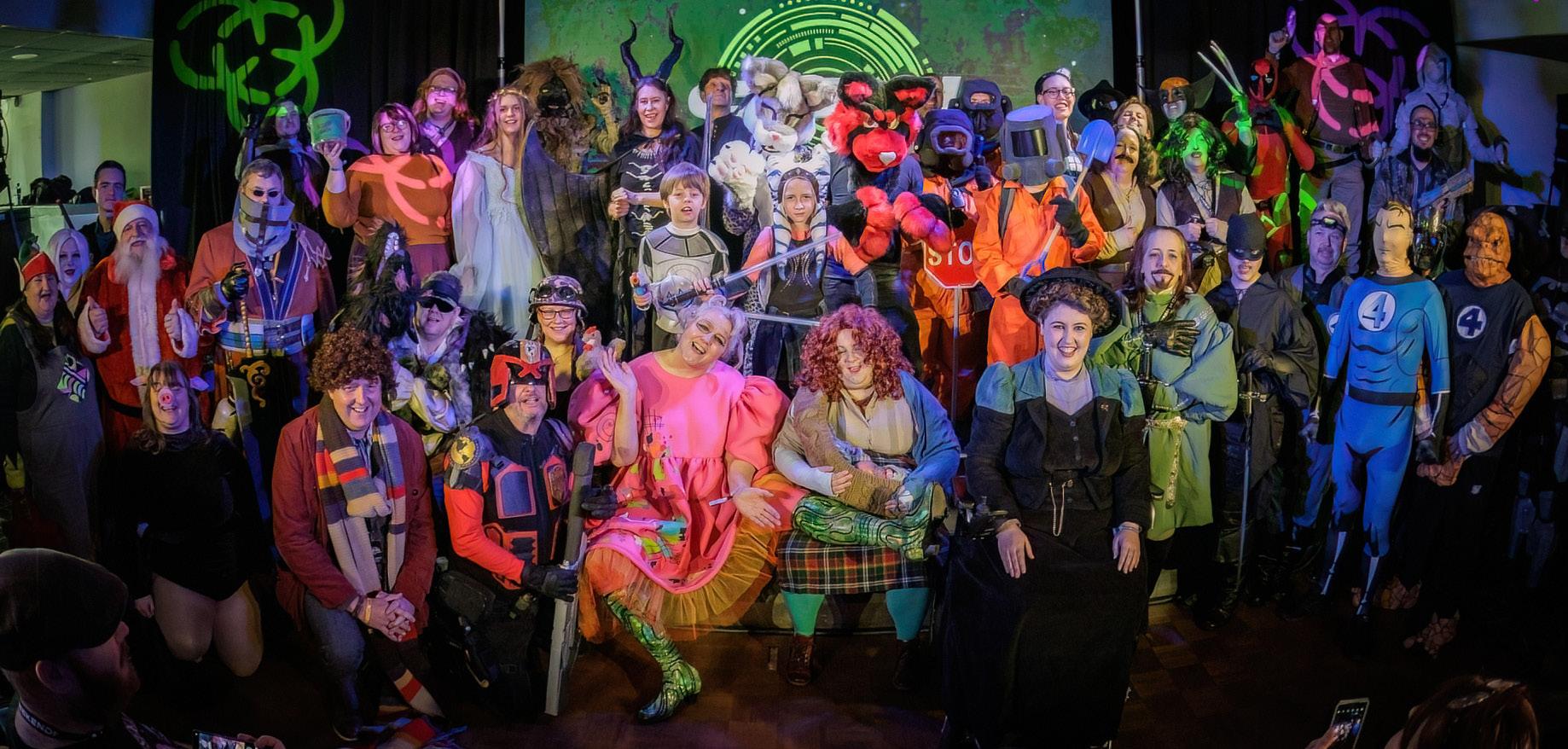






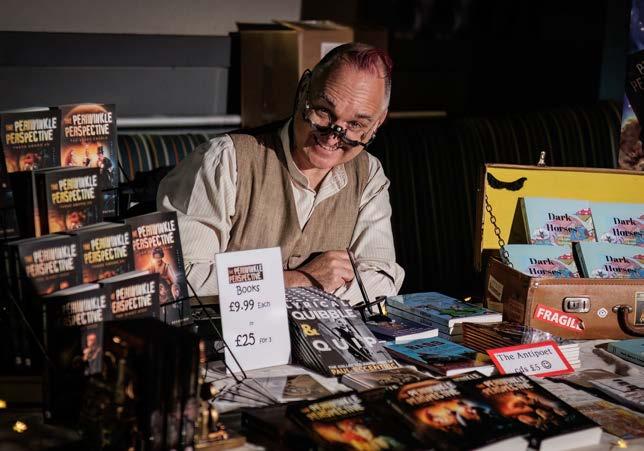



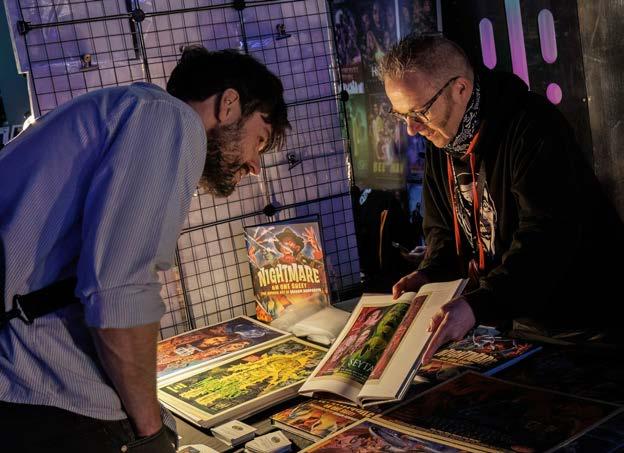
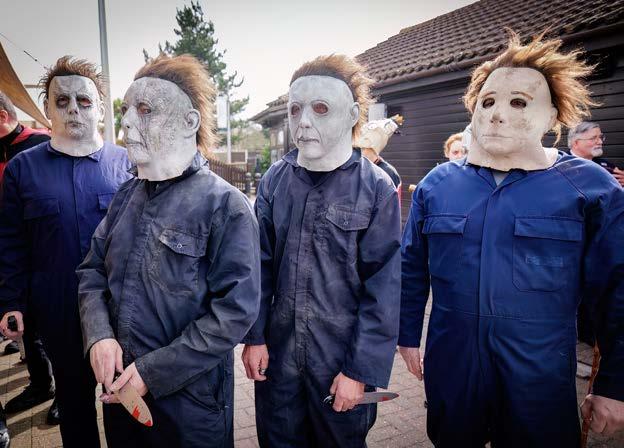
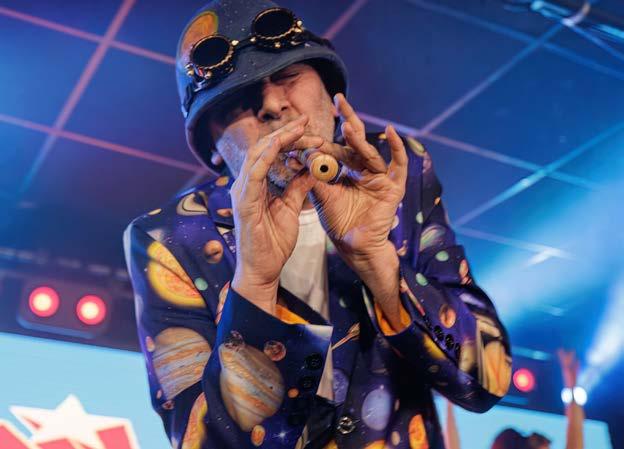

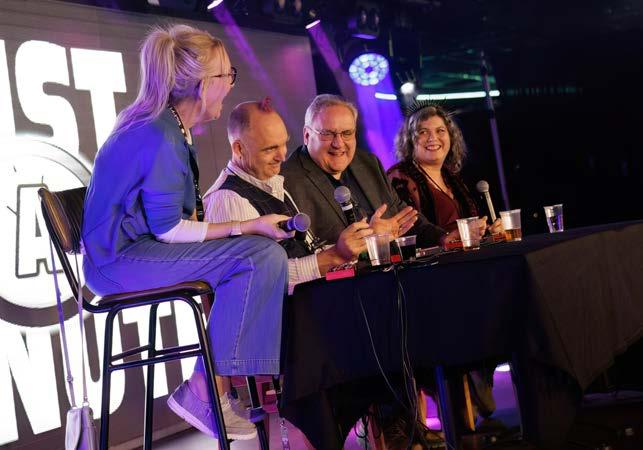
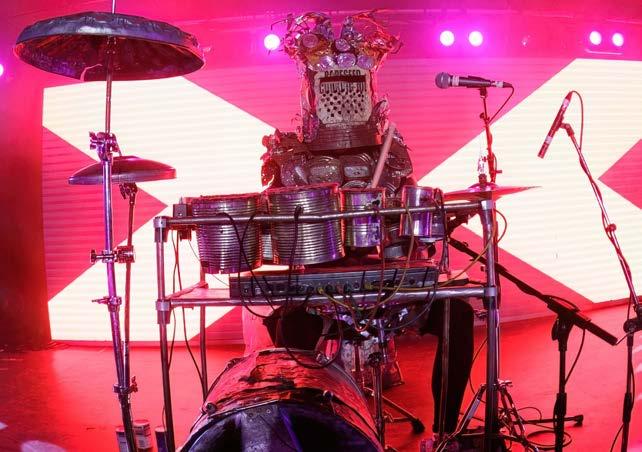
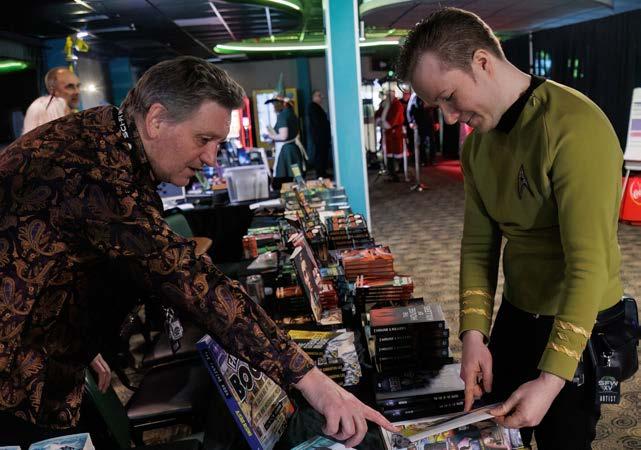

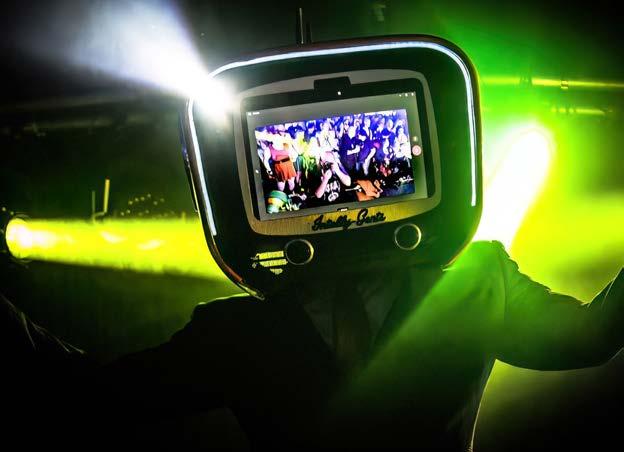




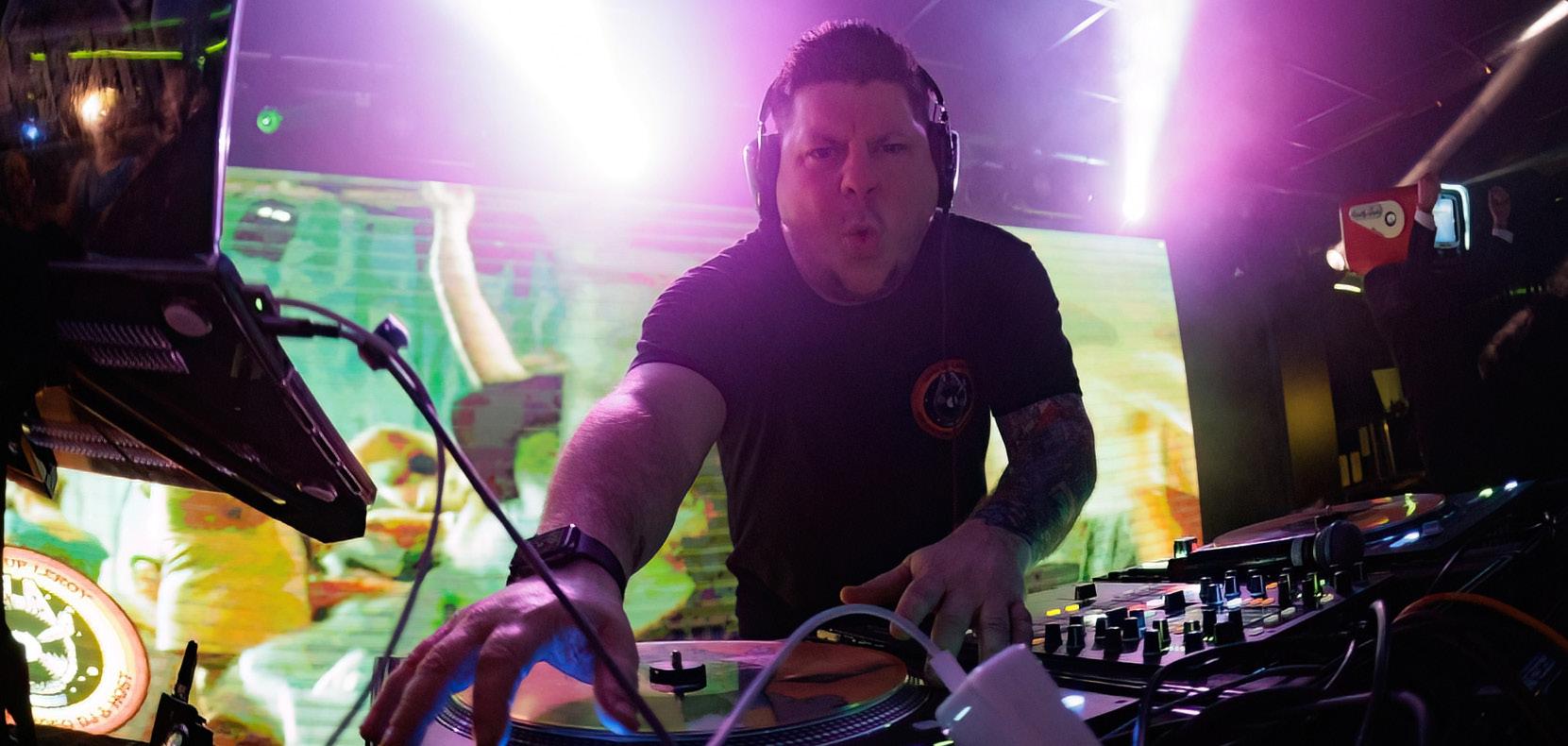

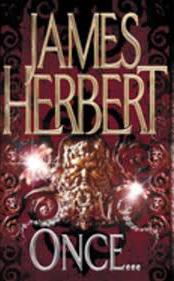
ONCE…
JAMES HERBERT
REVIEW BY
DAVID J HOWE
There is always something special about a James Herbert book … as a writer he is constantly reinventing himself, defying critics to place him in a niche as one type of author writing one type of fiction. As he says himself, he writes what he writes, and more often than not, the results are enjoyable, entertaining, and satisfying – exactly what one might expect from someone who hits the top of the best-seller lists with every book he writes. In keeping with tradition, therefore, Once… is not a traditional ‘James Herbert’ novel, whatever that is. After the sad and mutated human horrors of his previous novel Others, Herbert has moved to happy and sexy faerie folk for the new tale. But don’t be lulled into a false sense of expectation. Once… may appear to be a faerie story for adults, but it is also horrific and erotic in a way that only James Herbert can manage.
Thom Kindred returns to his childhood home following an accident which left him easily tired and slightly lame. There he finds that things have not really changed, and the cottage he is staying in brings back many memories. However his childhood friend Hugo has a problem: Hugo’s father is sick and dying, nursed by the startlingly attractive Nell Quick. When Nell starts to take an interest in Thom, his suspicions are aroused, but soon Thom finds himself distracted. He sees creatures with wings and shedding light: faeries. He is captivated by one such human-sized creature, and soon Thom starts to discover that his past is not all that he believed, and that he has a strange affinity with these beautiful and alluring creatures.
Herbert paints a wonderful world of shifting light and dark, where characters’ motivations are often hidden, and those who seem benign turn out to be anything but. Thom experiences sex and lust with the faerie folk, and it’s difficult not to become involved in the erotic scenes that follow. However by turns the novel brings darkness and horror as an evil succubus is sent to obtain Thom’s semen, and Thom finds himself subject to terrifying attacks by wasps and spiders as he tries to understand the threads that bind him to the cottage.
I really enjoyed this novel. Like many of Herbert’s books it’s an undemanding read, yet draws you in and captivates you. The plot is straightforward, and the characters are interesting … all told an excellent read. But Herbert always goes one step further, and the packaging of the book is also superb. It’s currently available in two hardback editions: one with a black cover and one with a white cover. Moreover both editions feature a number of superb colour plates by artist Steve Stone, as well as numerous elves and faeries drawn by Bill Gregory and Herbert himself. It all amounts to a lovely package from a master storyteller.
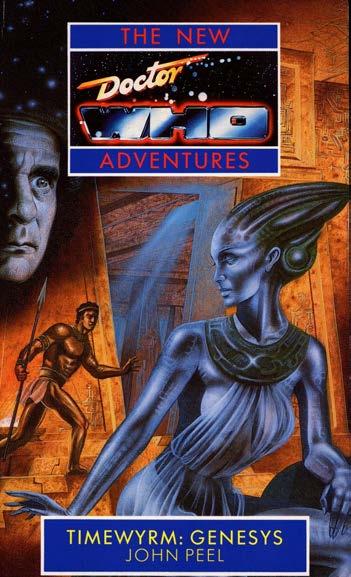
DOCTOR WHO: TIMEWYRM: GENESYS
JOHN PEEL
REVIEW BY CHLO HICKSON
Doctor Who fans normally like to start at the beginning. If you’re into Classic Who then you’ll go to an ‘An Unearthly Child’ or with New Who you’ll start with ‘Rose’. So when it came time for Virgin to publish their own Doctor Who novels, the closest thing the world had to an official continuation of the show in the 80’s, not only did they have to give a good first impression and convince the already existing fans that this was a brilliant idea, they also had to make something that was acceptable for new fans that hadn’t seen the show before
and further push Doctor Who into the future.
But did they succeed? I’ll be taking a look at each individual book and then doing an overview of the Timewyrm saga at the end to answer this very question.
One of the goals of these new books was to elevate Doctor Who to an adult audience, on paper this is an alright idea. Doctor Who was and still is a family show but these books had two demographics in mind: The hardcore fans and people who might be interested. Children weren’t who they were thinking about. One of the lines on the back of the books describes the range as full length science fiction novels, stories too broad and too deep for the small screen.
I’ll be coming back to the words ‘broad’ and ‘deep’ a lot in my reviews as each author seemed to have their own idea of what these words mean. After hearing about the upcoming Virgin New Adventures range John Peel became determined to write the first novel. The problem is he didn’t like the 7th Doctor. It’s ok to not like certain eras of the show as its always changing, but that just tells you how much Peel wanted to be the first published. If I’m being honest, I was generally shocked by the Doctor’s characterization in this book, this is a genuine quote ‘It’s an acceptable thing in this culture’ when he’s talking about Gilgamesh’s relations with a literal child. I mean, seriously? The Doctor? This is something that Peel genuinely thought the Doctor would say. The worrying thing about this is that it’s often logic like this that is used in the real world to try and excuse the behavior of paedophiles. I’ll come back to this later though. It’s obvious that Peel didn’t like the McCoy Doctor but that didn’t mean that he had to inject so much of his hate into his writing. The Doctor is described as wearing questionable clothing; including shoes that hadn’t seen polish for at least a decade, baggy trousers, a floppy coat of some unsavory brown hue, a paisley tie which was badly knotted, and a sweater adorned with question marks.
I mean, it didn’t just stop with the Doctor as he took his time to take shots at Ace as well. At the beginning of the book the Doctor accidentally erases Ace’s memory, so we read it as she wakes up ‘On the back of the chair was a jacket of some sort. It looked well used, with a couple of burn marks in several places where the fabric had been gashed and then repaired and it had tonnes of badges on it. Nothing made any sense to her but with a shrug she put it in and examined her reflection again. God what a mess! Did she normally dress like this?’
I also don’t understand why the Doctor had to erase some of his memories to make new ones. I understand for plot convenience but as a Time Lord who is practically immortal, surely, he wouldn’t need to do something like this. I’ve heard that Peel did this to explain any continuity mistakes. I don’t know why he couldn’t have forgotten things normally instead of having this explanation. When Ace questions him if he’s changed any of her memories, he replied that he would’ve made her a lot less rude than she is. She’s all her again, for better or for worse. Yet another instance where the Doctor

is out of character. I’m not going to say the Doctor has never been a jackass to his companions. There have always been different times, especially with the 6th and 12th Doctors, but the 7th Doctor isn’t that kind’ve Doctor. In spite of him being the darkest Doctor, this is down to his enemies, we’re talking about an incarnation that bird whistles at babies, likes to listen to jazz and knows how to play the spoons. His relationship with Ace was that of a father figure. The Doctor in this book is honestly just awful to Ace. Remember he doesn’t like this Doctor; he probably didn’t have an interest in understanding this version of the character. I’m so glad that Timewyrm: Genesis was the only time he wrote for this incarnation!
Seen as this technically would’ve been the first adventure after ‘Survival’, I was surprised to find how much disregard the Doctor has for Ace. For example, when the group get to the inn, Ace is understandably uncomfortable about sharing a room with Gilgamesh, to which the Doctor just brushes off Ace’s concerns. Doesn’t really sound like the 7th Doctor I know. This book also manages to completely ignore all the development that was given to Ace in the final season of the show. Ishtar is an interesting villain. She doesn’t have grand motivations; she just wants to rule and to inflict pain on as many people as possible. She’s insane, but she’s methodical and determined. She brings out a determined and fatalistic side to the Doctor which is rarely seen, he is more than willing to kill himself and Ace to stop Ishtar.
This book assumes a lot from the reader, seen as it’s the first book of a new range it is definitely not a book for beginners in Doctor Who lore. While there are some brief explanations of things such as the TARDIS, it can’t be considered as easy reading; explanations are good for only the minimum necessary knowledge, and might leave a new person with more questions than answers. There is an excessive number of references to other stories. I love references, but it’s definitely over the top here. There is a good reason for it, as the Virgin New Adventures were the only continuing legacy of the series at the time, they had to establish that this was the successor of the show. Seen as the show returned in 2005 that defense isn’t really defendable now, but at the time this was Doctor Who, the only Doctor Who that fans got.
I’m surprised how long the New Adventures lasted when I discovered that the very first book has Gilgamesh fondling an underage girl with some rather explicit descriptions from Peel … Was this necessary? If it definitely had to be included, could we have done without knowing he licked wine off of her (you know what’s) or that he was literally groping her? Explicit images (bare breasts) are written about multiple times throughout the book and it’s disturbing. I will admit that I enjoyed some parts of the book but I can’t look past the bigger, more shocking problems. The disgusting, constant presence of paedophilic description along with the bastardization of the 7th Doctor renders the bulk of this novel hard to read. The multi-Doctor elements with the 7th Doctor receiving the warning about the Timewyrm from the 4th Doctor in the TV story ‘The Invasion of Time’ and the 7th Doctor needing to ‘reawaken’ – I still don’t even know what the hell this scene was even trying to do – the 3rd Doctor to win the battle was cringy.
Timewyrm: Genesys is probably one of the worst soft reboots that Doctor Who has made. There honestly isn’t anything interesting about Peel’s blurb, it’s definitely not something you want when you’re starting a brand-new range of all new adventures. Honestly read a re-cap online and skip to the
next book in the series Timewyrm Exodus.
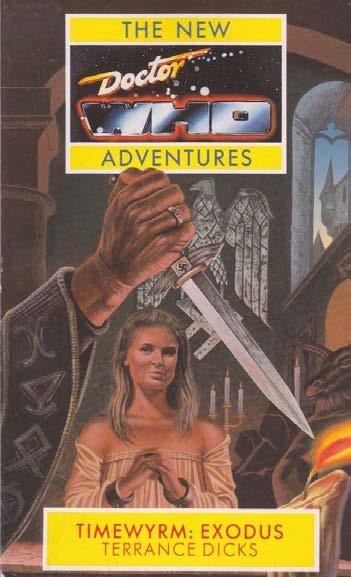
DOCTOR WHO: TIMEWYRM: EXODUS
TERRANCE DICKS
REVIEW BY CHLO HICKSON
It sounds strange to say this about a book that is set during the second world war, but Timewyrm Exodus, is a brilliantly fun book to read.
It isn’t an original idea, but it is well written, intriguing and tense. The oppressive gloomy atmosphere of Nazi occupied London is impressively realised, echoing ‘The Dalek Invasion of Earth’, but instead of alien metaphors we get the real thing.
Despite having the Doctor and Ace revelling in Nazi luxury, Dicks also modifies this by showing the nasty underbelly of Nazi society as well. While the Doctor and Ace may be enjoying a nice dinner in a Nazi-run hotel, we also see the British Museum looted, a Jewish tea shop owner brutalised and blackmailed by local Nazi thugs, and a resistance living in utter paranoia and squalour. In 1939, the Doctor and Ace tour the streets of Berlin which, despite the banner, looks like a pleasant city on the surface. But then they see the ‘no jews’ signs and watch as an SS parade goes by and beats up a man in the street for failing to salute the flag as it went past.
I think this is another example of Terrance Dicks excellent world building and scene setting. Right from the start, this alternative London feels very ominous and unlikeable. He doesn’t skip on how the city is littered with Nazi homages and briefly describes a Union Jack Swastika armband on the soldiers. There is also further explanation and backstory regarding Nazi-Britain given later on in the book as well, so Dicks doesn’t just go “one and done” with the world building but keeps on adding to it, which I love.
The epilogue brings the book full circle with two cups of tea and two buns, except this time, the Doctor and Ace enjoy them. They don’t taste bad. I think these contrasting opening and closing scenes are metaphorical of what a Nazi England
would be like. If so, that’s clever, and subtle symbolism is the mark of a good author.
Timewyrm: Genesis elected to use sex as the way to be adult while here it is just pure adult themes. There are sacrificial cults reminiscent of ‘The Stones of Blood’ and ‘The Masque of Mandragora’ and the villain is even from a classic Dicks story from 1969.
Dicks is often criticized for writing the wrong incarnation of the Doctor, but I think he managed to capture the manipulative and cunning 7th Doctor from season 26. I didn’t think this was anyone but Sylvester McCoy’s Doctor.
This Doctor has an aura of power, a natural authority that makes people of the Nazis regime respect & fear him. It was honestly quite funny seeing him run rings around the Nazis, and seeing right through their interrogation techniques.
Reading the Doctor slapping a young Nazi was honestly quite satisfying. Yeah, it was kinda hard seeing McCoy actually doing this, but it was enjoyable, nonetheless. He does actually feel like the Doctor unlike in Timewyrm Genesis, as he goes out of his way to make sure the man behind the coffee shop is alright.
The way the Doctor asserts social dominance over the Nazis, without any proof, is so in tune with the seventh Doctor and its just honestly fun to read. But like I said, he still goes out of his way to be the Doctor – like when a Nazi goes to strike a caretaker or when he insists on helping to clean up the museum – I can’t state how happy I was to have the actual Doctor in this book after Peel mischaracterised him so much in the previous book.
In short, the Doctor is placed in a situation he can’t control and is forced to be more rash in his decision making, which is a difference to their usual adventures, which is somewhere that I really love for writers to take the seventh Doctor. It’s this incarnation at his absolute limits and it’s a joy to read, though the thought of the Doctor working his way behind the scenes in Nazi Germany is quite a disturbing concept I’m not going to lie.
I’ve seen some people comment that Dicks is writing for the 3rd Doctor when he refers to his companion as ‘My dear Ace’ but he says this to her in the TV episode ‘The Greatest Show in the Galaxy’ so I don’t see where this issue is coming from?
It was nice to see the duo I know from TV again. There’s even a moment where the Doctor shows a kind of fatherly love towards Ace which was exactly what was missing in Timewyrm: Genesis.
Timewyrm: Exodus is the first time that Terrance Dicks has written for Ace and I think he does a pretty good job at capturing her character.
Ace’s rebellious nature is played down a bit, but she is given a rare vulnerability that I think works for this story. She only breaks character once, under a lot of stress, when she’s faced with possibly being sacrificed, she does the traditional Classic Who companion thing, but I can forgive that given the circumstances that she was facing and what I was put through reading Peel’s version of the character. I don’t think you could do a worst characterisation of someone if I’m being completely honest about it.

I think this is the best book Terrance Dicks has written for Doctor Who, at least the ones I have read so far. This book surprisingly doesn’t have much to do with the Timewyrm story arc. Maybe Dicks just wanted to write his own book so decided to dismiss her to the side so that he could write the book he wanted to write? So here we have a Timewyrm book with very little to do with the Timewyrm.
I say this but we do feel her presence. Dicks always keeps the reader guessing if she is the source of the interference in history or if it’s a time meddler from the Doctor’s past. He weaves this suspicion masterfully through the story and than pulls the ultimate trick of revealing that there are actually two entities interfering with history. If we compare this to John Peel’s work in Timewyrm: Genesis we got introduced to the Timewyrm in the first chapter, but we also didn’t have any mystery about her, because everything was explained to us. Only in the last few chapters of Peel’s book did we feel like we understand the true power of the Timewyrm, but Dicks took a completely different approach by keeping her an elemental force who isn’t seen. We can get actually afraid of her as a raw force of evil.
And of course, the ending is excellent, setting up the next conflict and enticing the readers to move on to the next book in the saga.
The Timewyrm seems to be a great villain for the 7th Doctor because of how much she knows, and she is connected to the Doctor and the TARDIS and knows what the Doctor is going to do. The stakes were raised here as if she dies the Doctor and the TARDIS die as well.
It honestly depends on the story if I enjoy the Doctor hanging out with historical people, but Dicks manages to successfully portray Hitler as a historical figure by showing him in several points along his life. Having the Doctor meet such a real-life evil could have been disastrous. Fortunately, I think it was handled with the right amount of sensitivity.
I think my favourite part in the book is when the Doctor and Ace are captured by the Nazis and put in prison where they proceed to interrogate them using a variety of psychological techniques to break them down and even attempt to fool them to sign false confessions, but the Doctor knows all of their tricks and makes the whole situation into an absurd history lesson for Ace. Its almost like he’s watching historical re-enactments. He even gives them feedback like it’s a talent contest which understandably only infuriates the Nazis.
The only part of the book that I found a bit disappointing, if I can say disappointing as I like ‘The War Games’, was the inclusion of the War Chief and his allies. I just thought this book was strong in its own right that didn’t need the addition of continuity elements from the TV show. I think the threat of the Timewyrm and the Nazis is more than adequate. I will say that having the War Chief and the Timewyrm working separately could have cluttered things up, but this was avoided, and the reader is allowed to put some effort into guessing what’s happening, he even included some red herrings. Dicks also keeps things interesting with the sudden disappearance of Hemmings into the TARDIS midway through the story which sets up a cryptic anticipating sequel conclusion.
Speaking of the War Chief, who I honestly never thought could be brought back, he is brilliantly depicted here. For the
sake of controversy, I’m not going to talk about this character being the Master. I’ll leave my thoughts on the matter in my review of The War Games In Colour.
I also want to address the consequences of Kriegslieter’s aborted regeneration as it’s so grotesque and honestly disgusting that I love it. I actually love the idea that regeneration isn’t always guaranteed to work. The contorted extra limbs and the implication of his irregular skull; it’s not pretty to imagine it and this instantly makes it clear why he wants revenge on the Doctor.
Because this is a Terrance Dicks book there are a lot of references to other adventures, let’s be honest this was completely normal for all of his books, so I’ll call them Terrance-isms. There are a hell of a lot more than the ones I’m mentioning by the way. The Doctor calls himself Johann Schmidt which is the German version of John Smith – he uses this again in Storm Warning, Colditz, and Klein’s story. Ace references events from ‘The Curse of Fenric’, the Doctor references the death of his 3rd incarnation by radiation, he uses the line ‘sleep is for tortoises’ which was said by the 4th Doctor. Ace mentions that she can’t speak German and the Doctor replies that she never studied Cheetah language either.
Overall, I truthfully think that Timewyrm: Exodus is the novel that should have started this range. It’s dark and gritty in all the right ways and isn’t immature like its predecessor.
This is a well researched story with the surprise return of an old villain. Because it takes us from an alternative Nazi London to multiple eras of historical Nazi Germany, I think this book can act as both a pure historical and an alternative history in one which is further accessible to more fans as it appeals to multiple tastes.
The story has a vast amount of stakes and exploits them enormously feeling like a natural extension of season 26’s darker tones without going overboard.
I highly recommend this book, and I think it’ll be a great introduction to anyone who hasn’t read a Virgin Doctor Who New Adventure book before.
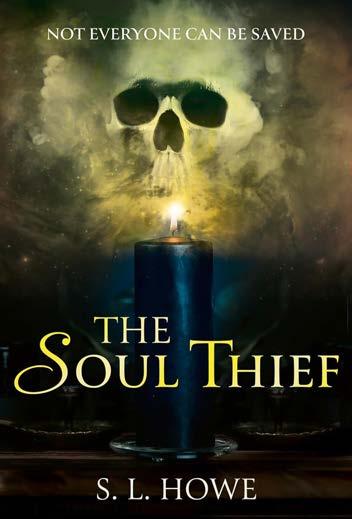
THE SOUL THIEF
SAMANATHA LEE HOWE
AUTHOR INTERVIEW
We all love a creepy novel for the winter, and 2024 brings a new, terrifying book from S L Howe. The Soul Thief is described as a Gothic Thriller, and promises to chill the bones and get you looking back over your shoulder.
The author is no stranger to the horror genre. As Sam Stone she has penned over 20 novels involving vampires, alien invasions, space zombies, a series of Young Adult novels about a Victorian Steampunk heroine, and much, much more. As Samantha Lee Howe she penned the multiple-award winning, and USA Today Bestseller The Stranger in Our Bed (also filmed and starring Samantha Bond, Emily Berrington and Ben Lloyd-Hughes) along with the acclaimed espionage thriller series The House of Killers.
‘The Soul Thief came out of my love for Gothic literature,’ explains Samantha. ‘I have been particularly influenced by 19th Century gothic writers such as Bram Stoker, Sheridan Le Fanu and Mary Shelley. Gothic means different things to different writers but one of the outstanding features in books traditionally described as ‘Gothic’ is a sense of place: the huge manor house; the dark and dreary parsonage; the crumbling and brooding architecture; all of which were elements that feature strongly in the city of Manchester where I was born.’
The book is set in and around Victorian Manchester, in particular the author uses the real life Heaton Hall. ‘Growing up I visited Heaton Hall many times. In those days the Hall was open every day to visitors but it is now only open at certain times a year and there have been many steps taken to protect the house and the land. There was, therefore, every chance that this influential location would appear in one of my books and it was perfect as one of the locations used for The Soul Thief.’
The book follows a gentleman detective, Mitchell Bishop, and his fiancé, Laura Carter, as they investigate the strange deaths of Laura’s brother Warren and their sister Sara. They realise there is nothing natural about these deaths, and Mitchell becomes haunted by demons from his own past which may well have an influence on the present.’
‘I love writing horror,’ smiles Samantha, ‘there’s something cathartic about the process of dealing with things that scare you. I’m not afraid of old houses and exploring abandoned places: in my childhood I did both frequently; but there’s something about ghosts from the past reaching out to influence the present which is very pervasive. One of the things that has always unnerved me is demonic possession: losing control of your own body and soul. This is an element, along with some invented horror folklore, that I wanted to explore in the novel.
‘Manchester was a pivotal city during the Victorian technological boom, but also there was a great deal of crime, as there is in any major city. In this book I wanted to explore that seedy side of Victorian Manchester: prostitution; gangs; and the rise of photography, which seemed magical, in an era ready to exploit it in all ways possible.’
The Soul Thief is by S L Howe and published on 5 December 2024 by HarperCollins One More Chapter.
Signed Copies are available from Samantha’s website at www. samanthaleehowe.co.uk


